From the Kennedys to the Gettys: amazing homes of the world's most famous families
The palatial properties of the world's most prestigious families

They may not be royal, but descendants of many of the world's most powerful families live as if they were kings and queens.
From the Kennedys, Vanderbilts, and Astors to the Gettys, Trudeaus, and Hancocks, these famous dynasties have accumulated staggering real estate portfolios, including some of the most fascinating homes around the world.
Click or scroll on and join us for a whistle-stop tour around these famous family seats...
The Getty family
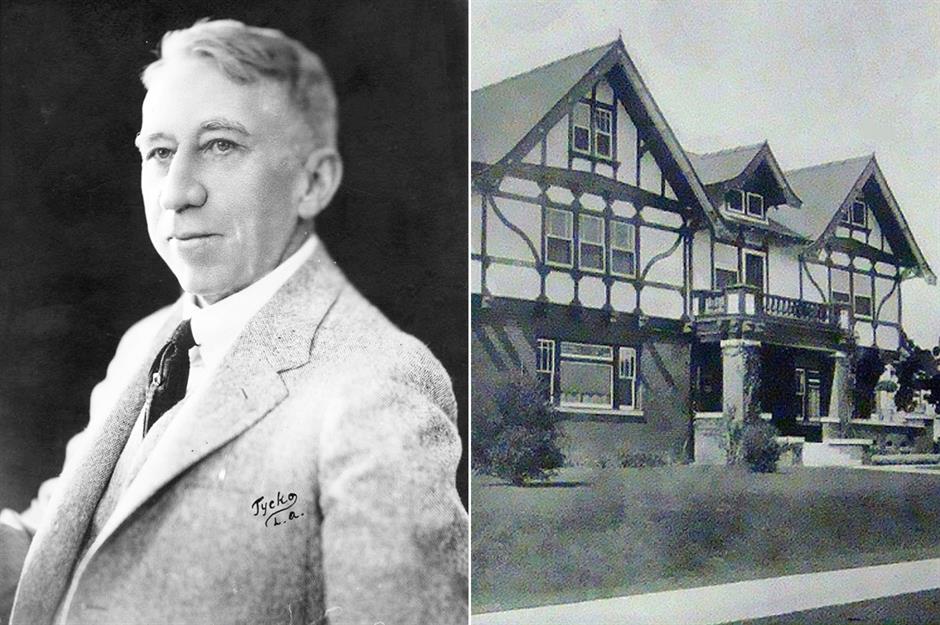
Known for their immense wealth and litany of family tragedies (dubbed ‘the Getty curse’), the origins of the Getty dynasty can be traced back to George Getty, who had the foresight to invest in America's burgeoning oil industry in 1903.
George moved his family from Minnesota to Los Angeles in 1905. He commissioned a half-timbered mansion, which was completed three years later but has since been demolished.
Patriarch of the Getty dynasty
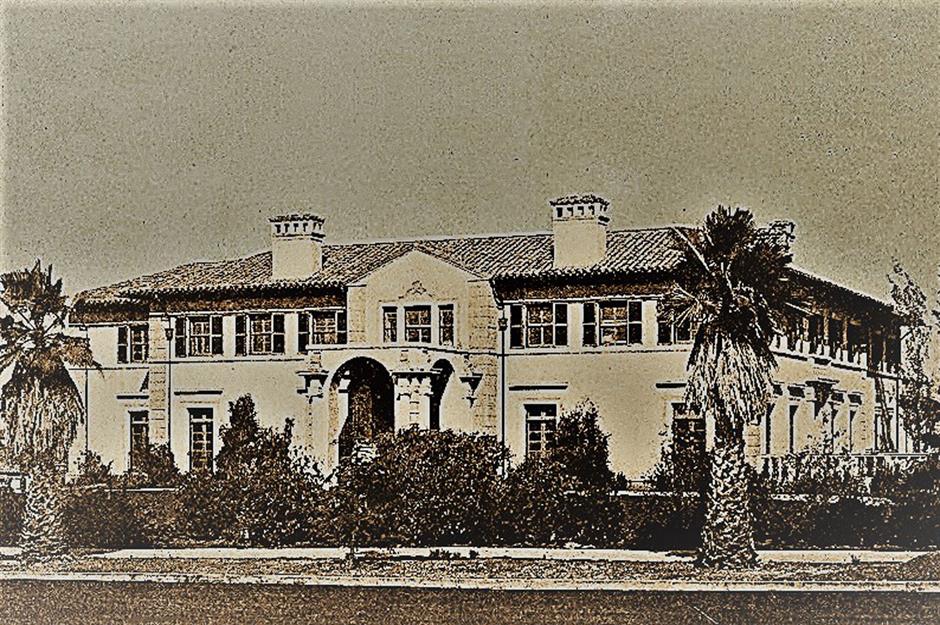
However, it's his son John Paul Getty who is considered the patriarch of the dynasty, founding the Getty Oil Company in 1942 and becoming the richest private citizen in the world by the 1950s.
An avid art collector, the industrialist invested shrewdly during the Great Depression and bought the Mediterranean-style William O Jenkins House on Los Angeles' Wilshire Boulevard in 1936. Ominously, it was also known as 'The Phantom House'. He had no intention of living in it, however, allowing one of his ex-wives to reside there.
Sunset Boulevard mansion
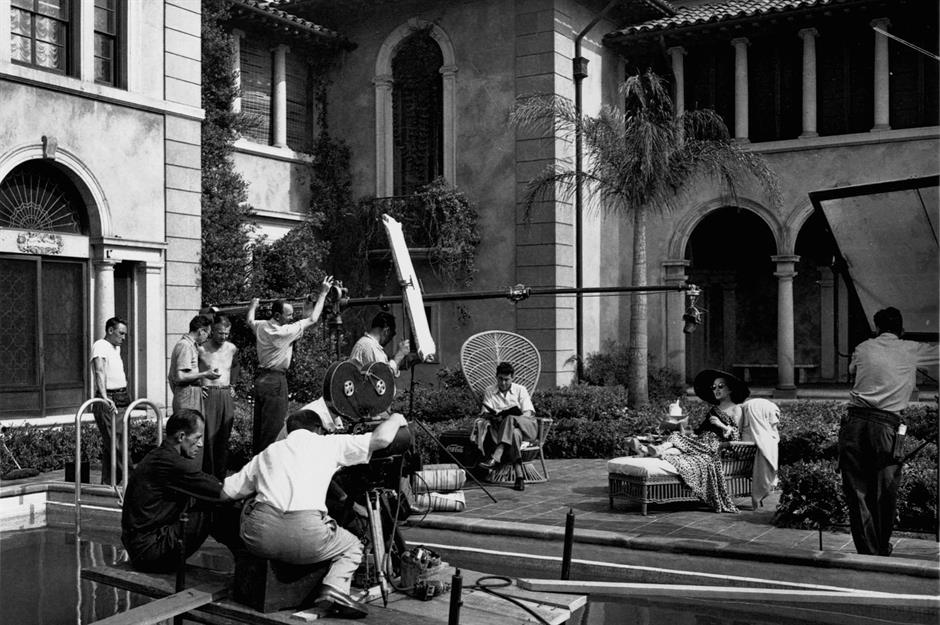
The mansion was eventually knocked down in 1957, having remained empty and neglected for some time, but not before it was immortalised on film as the dilapidated home of former silent screen star Norma Desmond, played by Gloria Swanson, in the classic Hollywood movie Sunset Boulevard.
It appeared on screen once more in James Dean's Rebel Without A Cause, before being torn down to make way for an office building.
Having studied at the University of Oxford, John Paul Getty moved to Europe in the 1940s, where he lived out of five-star hotels.
Sutton Place
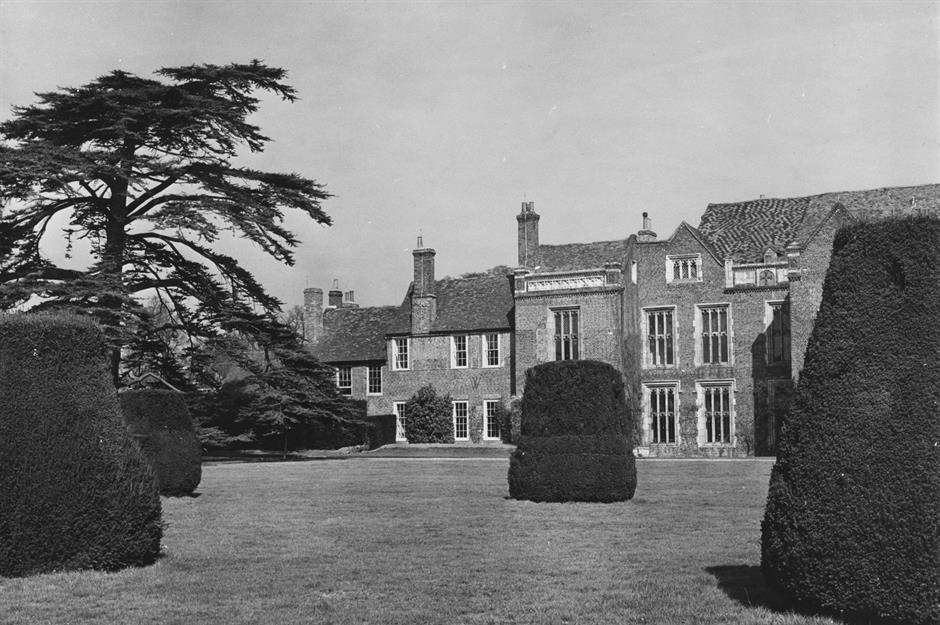
In 1959, he purchased Sutton Place, a 16th-century Tudor country house in Surrey, England, for $840,000, the equivalent of around $9 million (£6.6m) as of 2025, which he filled with his priceless art collection. Notoriously frugal, the oilman installed a coin-operated telephone in the mansion to prevent guests from racking up the bills.
In 1973, he was reported in the British newspaper Evening Standard as reluctant to pay the ransom demanded by the kidnappers of his grandson, John Paul Getty III, when he was abducted.
Following John Paul Getty’s death at the house in Surrey in June 1976, the property was sold to art collector Stanley J Seeger.
Getty's Italian villa renovation
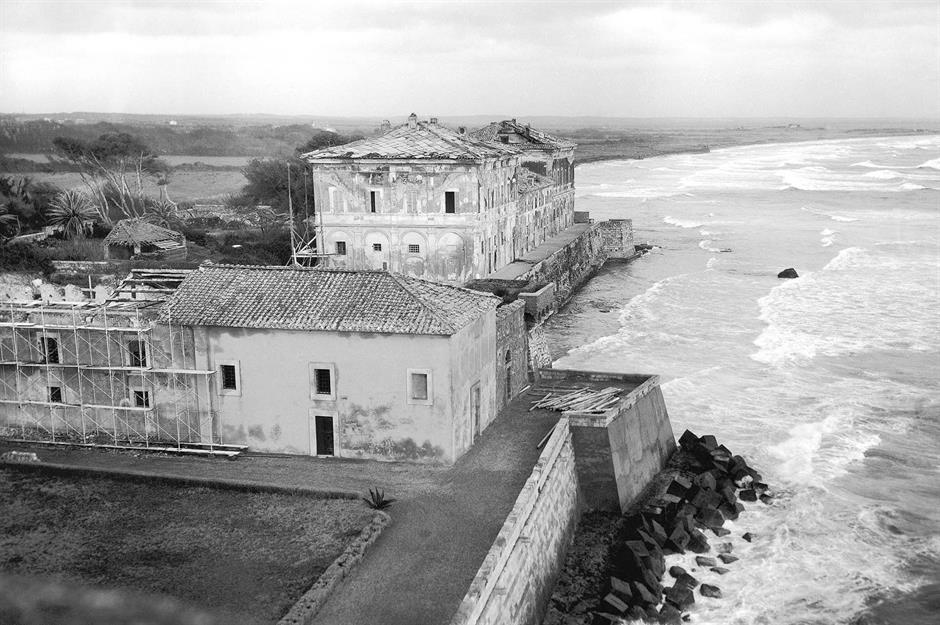
Perhaps to console himself after his failed stab at high-society entertaining, John Paul Getty bought La Posta Vecchia on Italy's Lazio Coast in the summer of 1960.
Despite his miserly instincts, he spent a fortune restoring the 17th-century villa to its former glory, discovering ancient Roman ruins in the process. This photo, taken in February 1966, shows the villa (the far building) mid-renovation.
The historic villa was sold after the tycoon's death in 1976 and converted into a luxury 19-room boutique hotel. It's still decorated with antiques and artworks handpicked by its unimaginably rich former owner.
Photo finish for the new generation
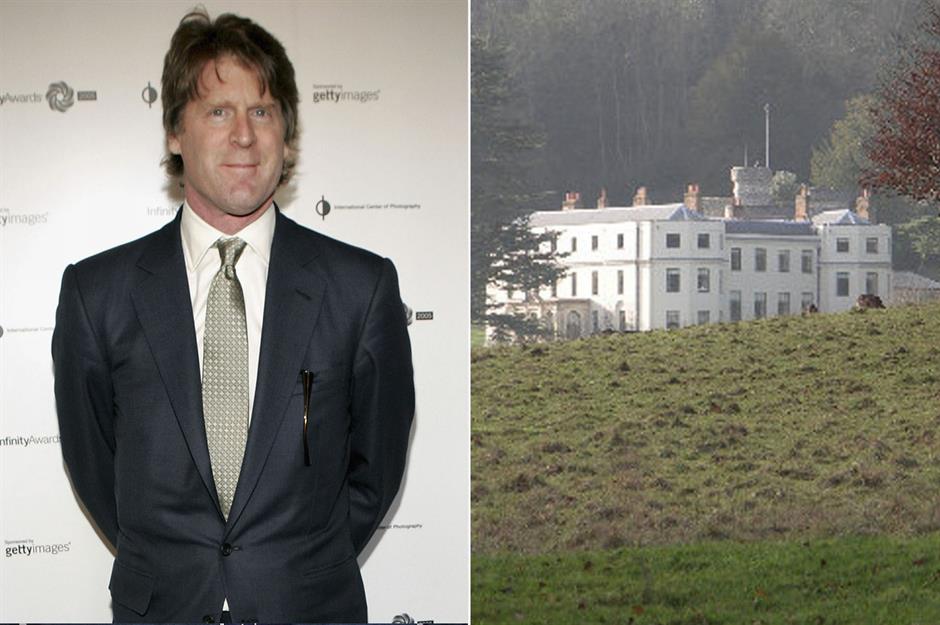
John Paul Getty's son, the philanthropist John Paul Getty Jr., bought the 18th-century Wormsley Park mansion in 1986 and completed a sympathetic restoration of the property.
The remarkable home in Buckinghamshire in the South East of England is set in 2,700 acres (1,092ha) of rolling grounds and dates all the way back to the 16th century.
The country house is now the residence of his son, Mark Getty, the co-founder of Getty Images. According to American business magazine Forbes, Mark appears to have “broken free of the dysfunction in his family.”
The Kennedy family
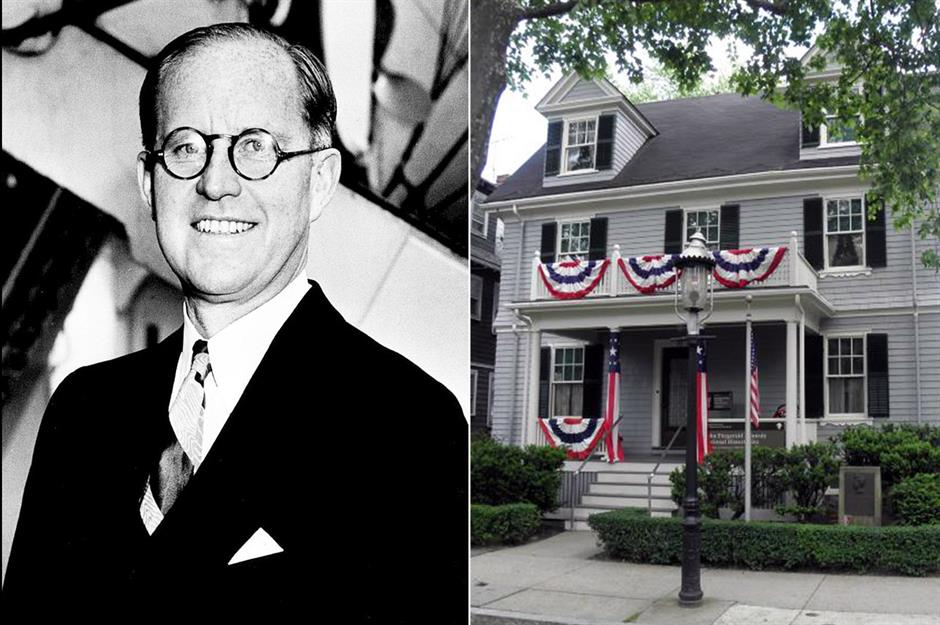
One of America’s most famous families, the Kennedys have fascinated us for decades, both as glamorous society figures and political movers and shakers. The patriarch of the powerful Irish-American dynasty, Joseph “Joe” P Kennedy Sr, was a successful entrepreneur.
His son, John Fitzgerald Kennedy, better known by his initials JFK, was born in 1917.
At the time, the family was living in this clapboard house in Brookline, Massachusetts. The house was designated a National Historic Site in 1967, as reported by American publication, Architectural Digest.
Moving on up
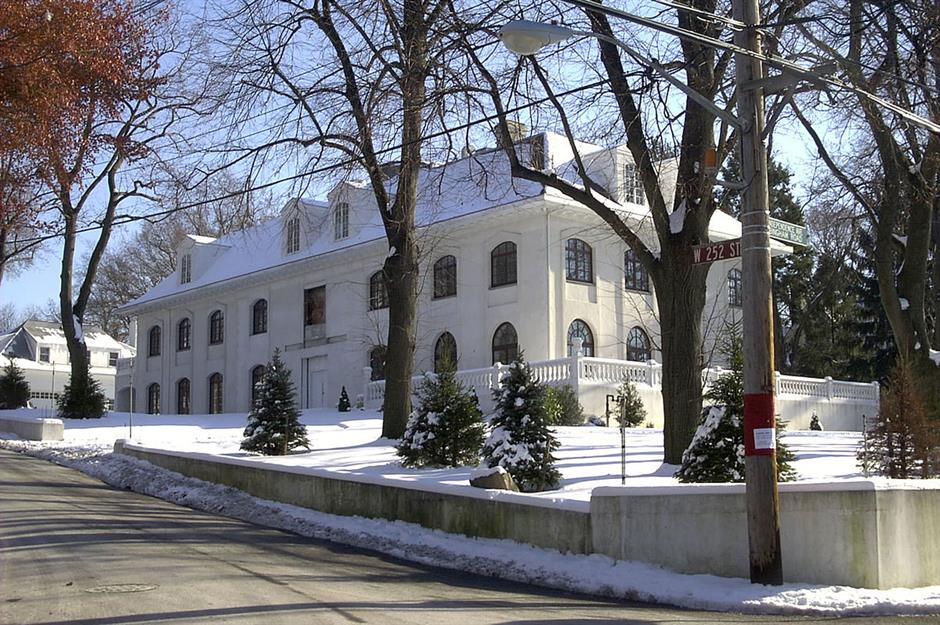
As the Kennedy patriarch's fortune grew, his real estate portfolio expanded accordingly. In 1927, the clan moved to this 20-room Georgian Revival mansion overlooking the Hudson River in the New York borough of the Bronx. The three-storey stucco-clad residence was built in 1907, and JFK attended nearby Riverdale Country School with his siblings.
The family moved again in 1929, this time to Crownlands, a six-acre (2.4ha) estate in Bronxville, New York. The Georgian-style mansion had all the trappings of their upwardly mobile position in society, including a screening room and cottages for a driver and gardener.
The family lived here until 1942, after which the house was demolished and the land subdivided.
The Kennedy Compound, Cape Cod
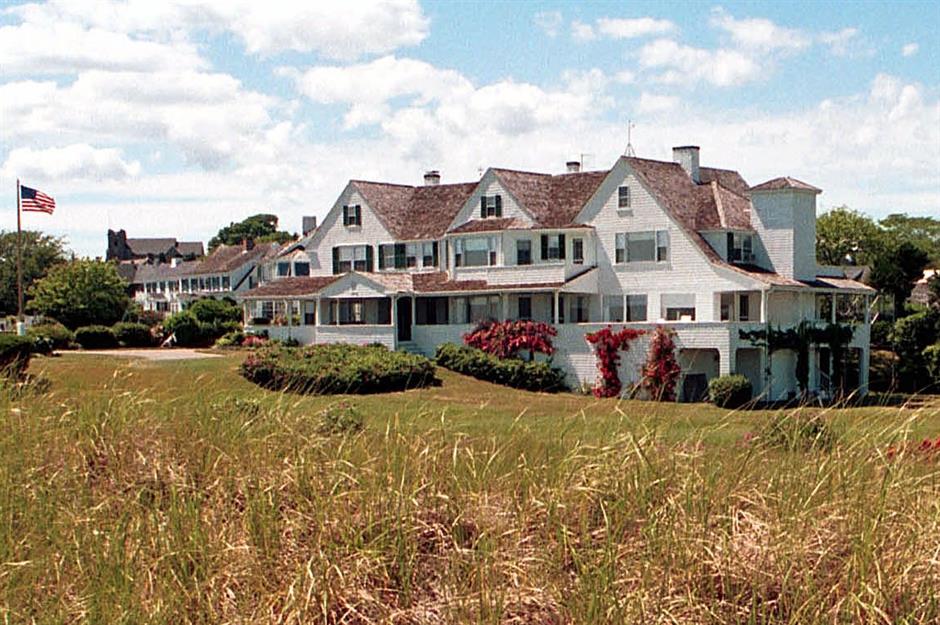
In 1928, Joseph P Kennedy Sr also purchased this clapboard summer house for the family on Marchant Avenue in Hyannis Port, Cape Cod for $25,000, the equivalent of $472,000 (£348k) today.
The property was the first of three houses that form the so-called 'Kennedy Compound', one of the most famous of the Kennedy residences.
The White House by the sea
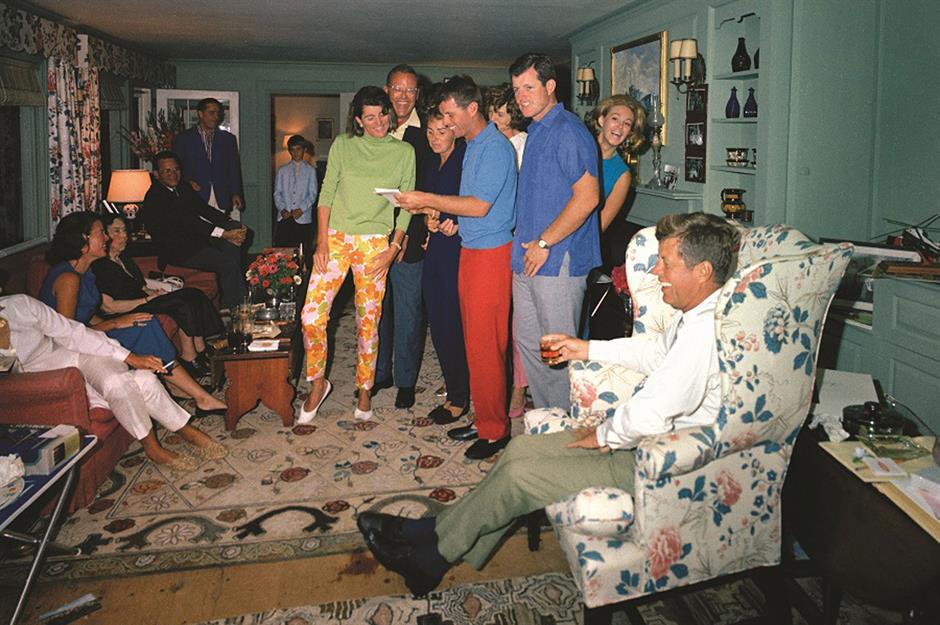
JFK and his brother Ted bought adjacent homes neighbouring the Kennedy summer house in the 1950s. The then-senator and his fiancée Jacqueline Bouvier posed for their engagement photos at the compound in 1953.
Hyannis Port became an outpost of the White House when JFK was president in the early 60s and continues to be a haven where new generations of Kennedys can escape their busy lives and reconnect with family. Ted Kennedy lived there until he died in 2009.
His home has since been donated to the Edward M Kennedy Institute for the United States Senate.
American royalty
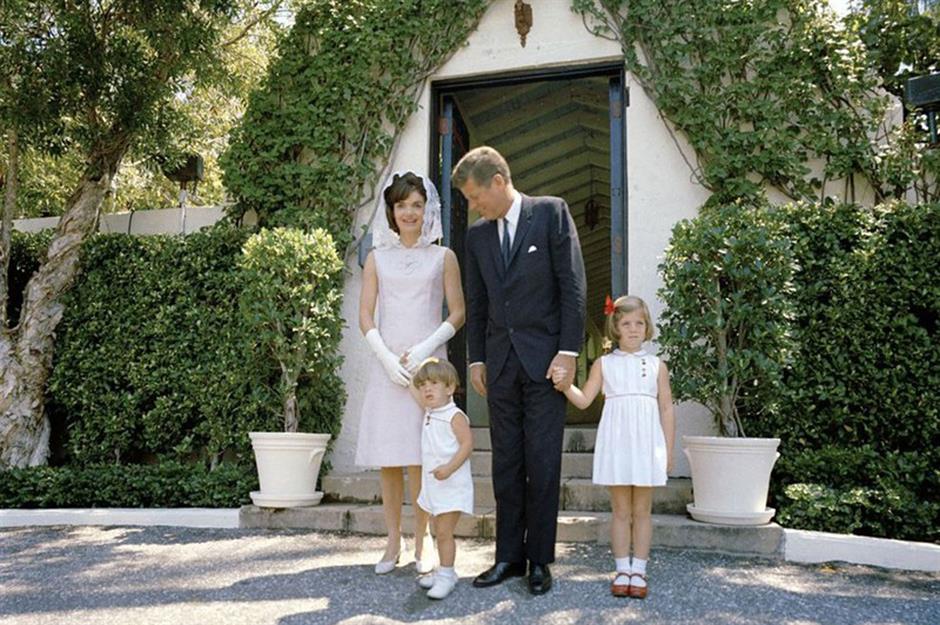
JFK spent part of every winter at the family mansion in Florida’s Palm Beach, and it was nicknamed ‘The Winter White House’. Purchased by Joe Kennedy in 1933, the Mediterranean-style six-bedroom house was built in 1923 by iconic architect Addison Mizner for Rodman Wanamaker, heir to a department store fortune.
Often described as ‘American royalty’, JFK, pictured here with his wife Jackie and children John Jr and Caroline, is said to have planned his inauguration speech at the mansion.
The house stayed within the Kennedy family until 1995, when it was put up for sale. It changed hands again in 2020, reportedly selling for a staggering $70 million (£52m).
The future of the Kennedy family
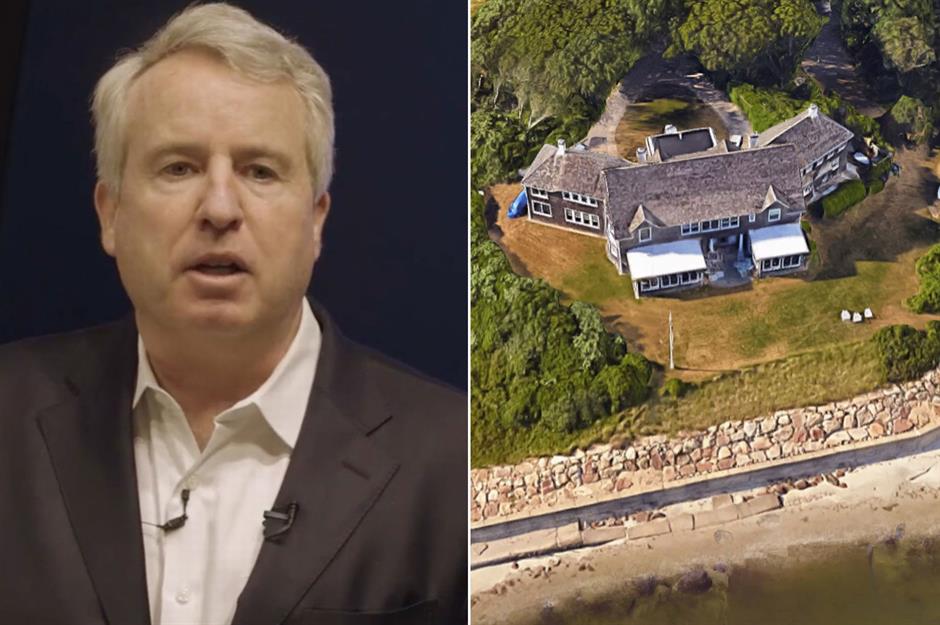
JFK spent the summer of 1963, his last before his assassination that November, with Jackie and their children at Brambletyde, a secluded property down the road from the official Kennedy Compound.
According to Kennedy biographer Kate Storey, the couple loved the house so much that they tried to buy it, but were unsuccessful.
Today, JFK’s nephew Christopher Kennedy reportedly owns the property and celebrated his son’s wedding there in 2021.
The Vanderbilt family
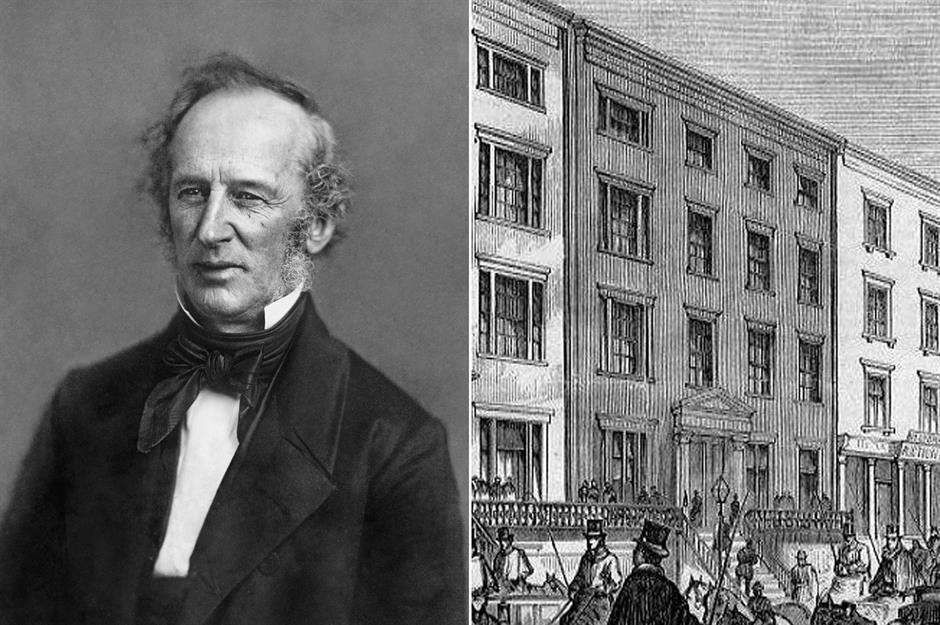
The Vanderbilts made their fortune from railroads and shipping during the 19th century. The first of the so-called robber barons, Cornelius Vanderbilt rose from rags to riches to become the wealthiest person in the US by the 1860s. The tycoon died in 1877 at 10 Washington Place, his mansion in New York.
Although Cornelius had only one property of note, his descendants built some of the most magnificent mansions of America's Gilded Age.
His eldest and favourite grandson, Cornelius Vanderbilt II, kicked things off in 1883 with the construction of a château-like townhouse at 1 West 57th Street in New York City.
The Gilded Age
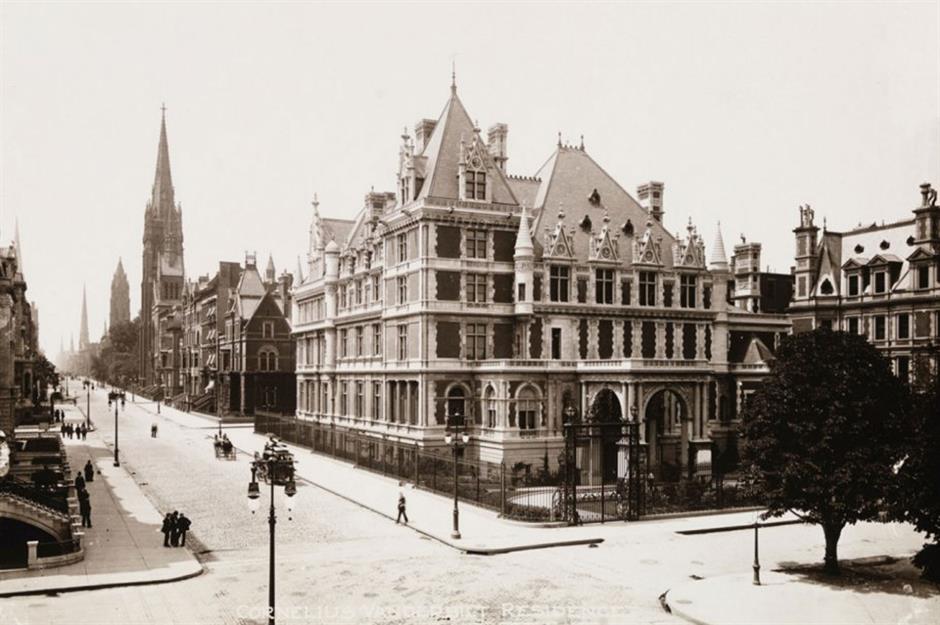
Spanning 90,000 square feet (8,361sqm), the six-storey house was, at the time, the largest ever built in New York City, boasting everything from a ballroom and the grand salon, to a smoking den.
Following the death of Cornelius Vanderbilt II in 1899, the mansion passed to his wife, Alice, who offloaded the property in 1926. It was subsequently demolished to make space for the Bergdorf Goodman department store.
Society destination in Massachusetts
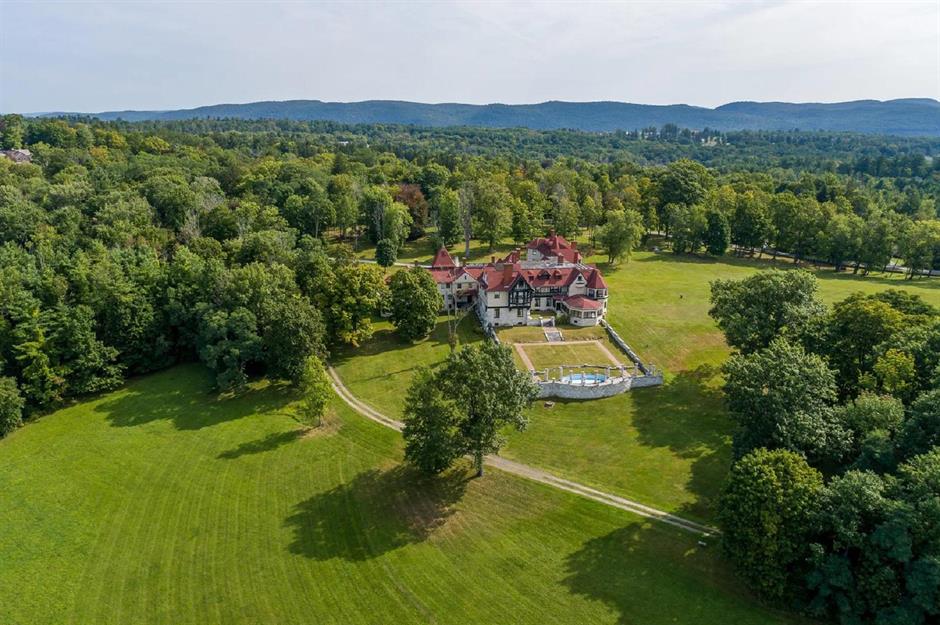
In 1885, socialite Emily Vanderbilt Sloane, the great-granddaughter of Cornelius Vanderbilt, oversaw the construction of Elm Court, a 105-room shingle-style summer escape in rural Massachusetts. The house went on to host the crème de la crème of American society.
Elm Court was decorated in an opulent Louis XIV style, and after the socialite died in 1947, the building was repurposed as an upscale boutique hotel. It was partly owned by Robert Berle, a direct descendant, until 2005, when it was listed for $21.5 million (£15.8m).
It was eventually purchased in December 2022 for $8 million (£5.9m) by a real estate developer who planned to turn the estate into a resort.
Magnificent Marble House
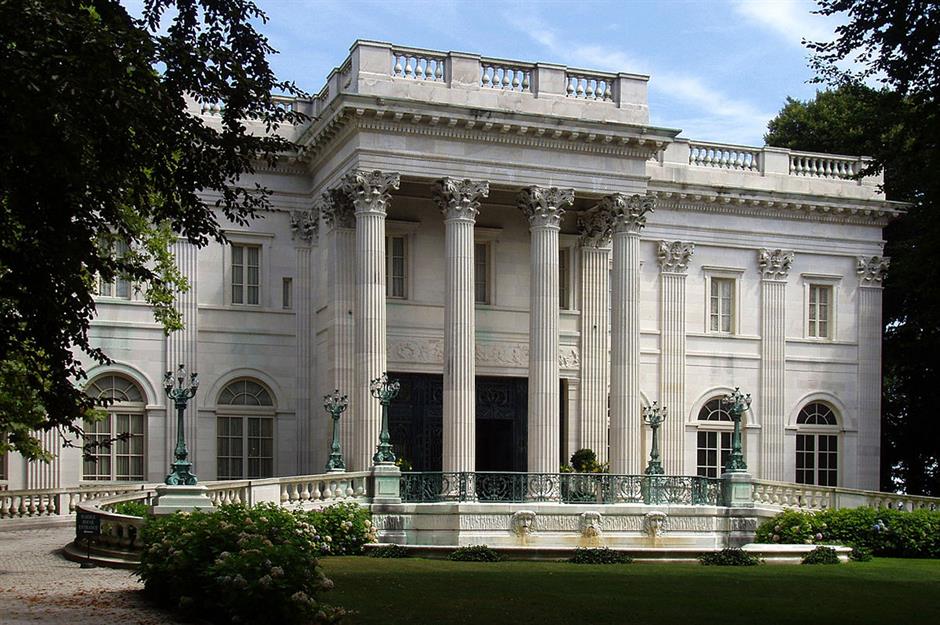
Not to be outdone, William Kissam Vanderbilt, brother of Cornelius Vanderbilt II, commissioned what became America's most sumptuous summer house in 1888.
Marble House in Newport, Rhode Island was completed in 1892 for $11 million, a colossal amount of money at the time and roughly $39.5 million (£29.1m) today. It became a social and architectural landmark that transformed the quiet neighbourhood into a legendary resort of Gilded Age mansions.
The Preservation Society of Newport County acquired the property in 1963 with financial assistance from William and Alva's son, Harold Stirling Vanderbilt. The house is now a museum.
The Breakers
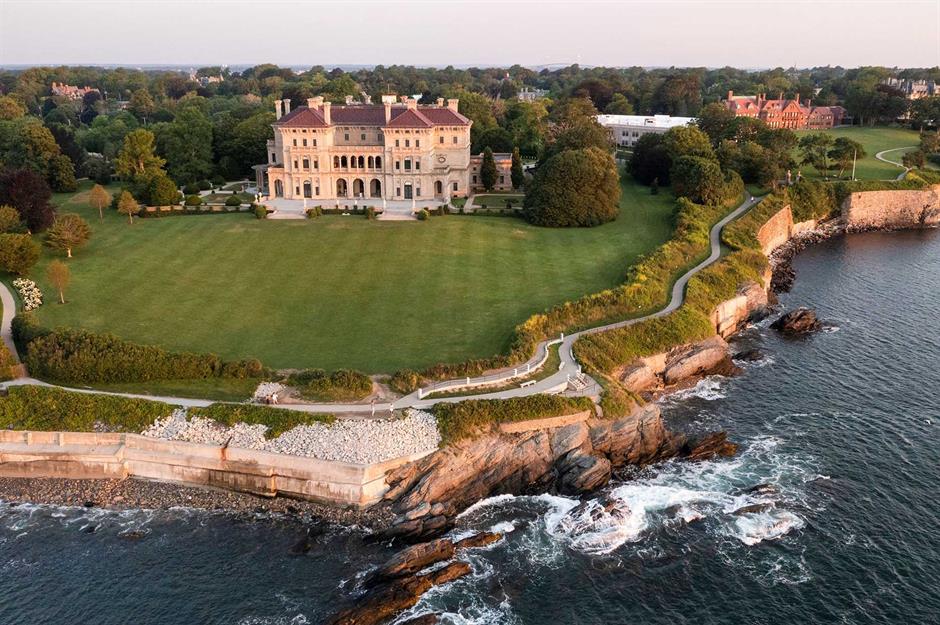
The Breakers, a 70-room Italian Renaissance-style palazzo also located in Newport, Rhode Island was built for Cornelius Vanderbilt II between 1893 and 1895.
With money no object, the fabulously wealthy heir went to town on the decoration, even outclassing glitzy Marble House. The property was passed to Cornelius Vanderbilt II's daughter, Countess Gladys Vanderbilt Széchenyi, who died in 1965.
It was then sold in 1972 to The Preservation Society of Newport County. Today, it's one of Rhode Island's top tourist attractions.
Biltmore: America's largest house
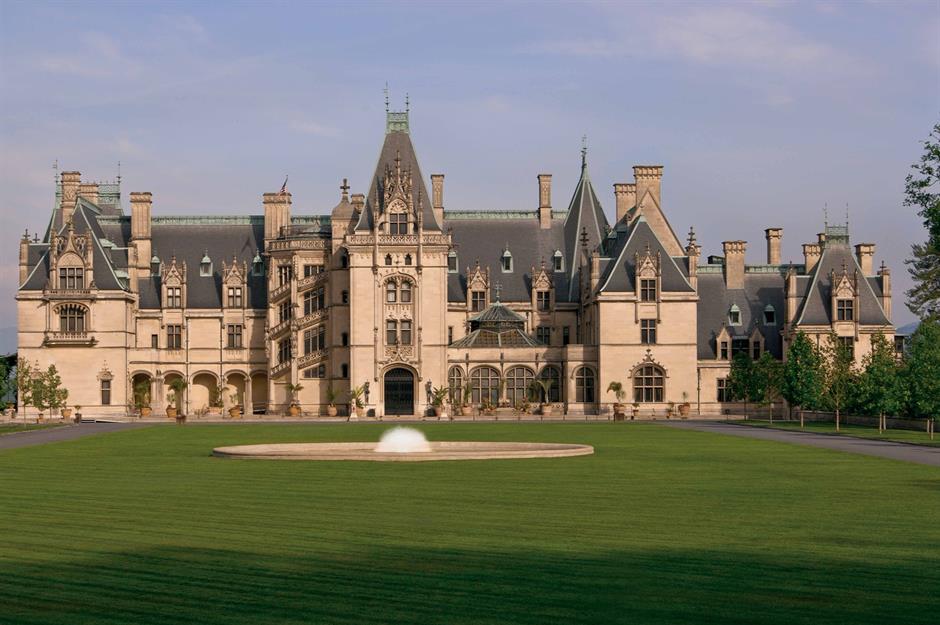
The most majestic Vanderbilt mansion of them all, and America's largest house, Biltmore, in North Carolina was commissioned by George Washington Vanderbilt II, grandson of Cornelius Vanderbilt.
Completed in 1895, the 250-room pile is still owned by descendants of George Washington Vanderbilt II, including Bill Cecil Jr, who is the CEO of The Biltmore Company.
The Guinness family
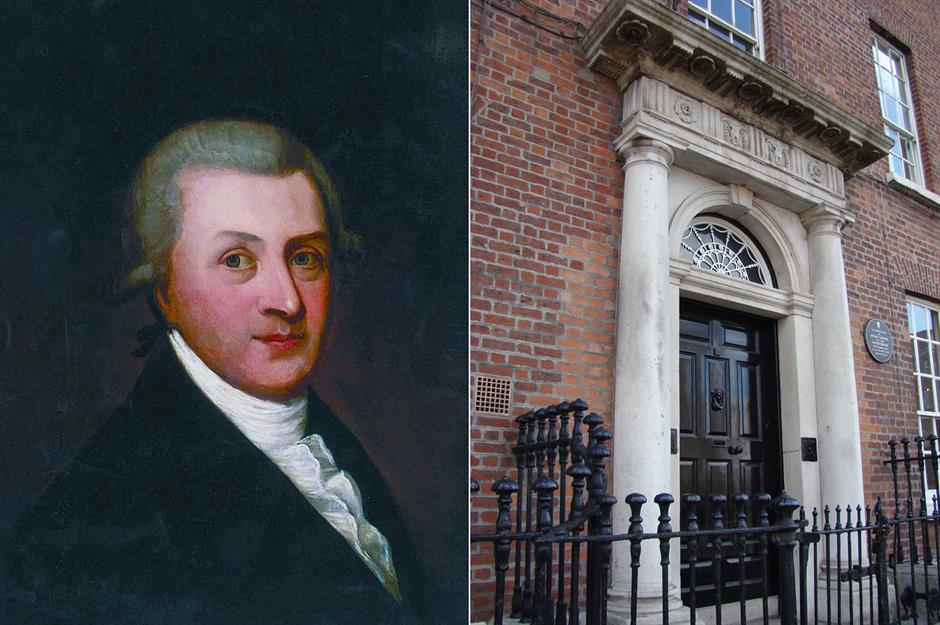
Across the Atlantic, the founder of the great Anglo-Irish brewing dynasty, entrepreneur Arthur Guinness, leased his first brewery in 1755 and had amassed a considerable fortune by the time he died in 1803, as well as a fine townhouse on Dublin's elegant Mountjoy Square.
Although the family owned some incredible houses, they were also rumoured to be cursed. 'The Guinness curse' began in 1944, when a member of the family was assassinated in Egypt.
Lady Henrietta Guinness, who passed away in the 1970s, believed the curse to be tied to the family's immense wealth. “If I had been poor,” she once said, “I would have been happy.”
Ashford Castle
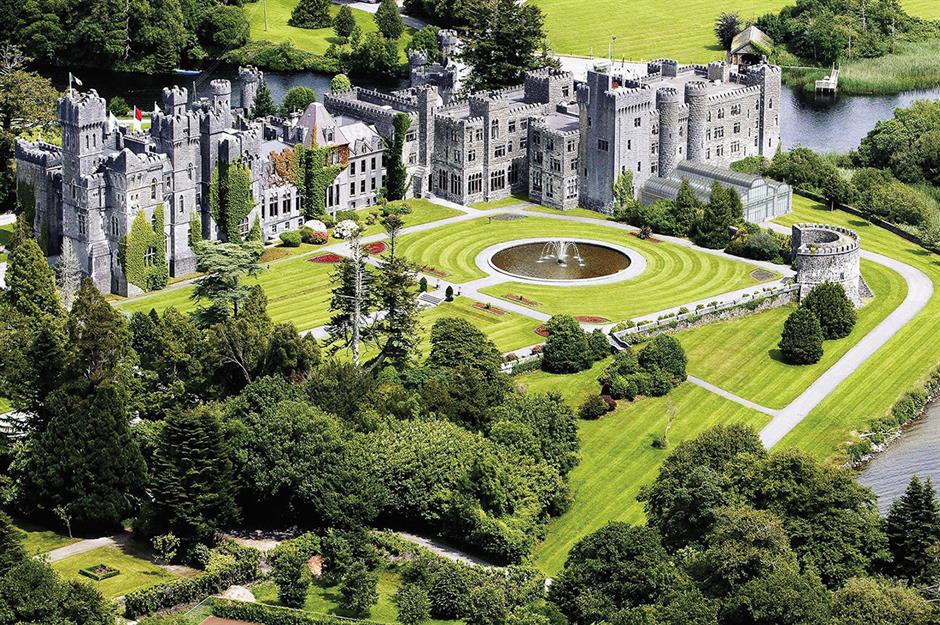
Arthur Guinness' namesake son upgraded the family's Dublin property portfolio to a larger mansion called Beaumont House, which is now a convalescent home. Then, Arthur Guinness II's son, Sir Benjamin Guinness, went even further upmarket.
Sir Benjamin Guinness purchased ancient Ashford Castle in 1852 and set about enlarging the building. The Gothic country pile stayed in the Guinness family until 1939, when it was sold on and converted into a luxury hotel.
It has since been extensively refurbished and has played host to presidents, pop stars, and royalty, including Ronald Reagan, Tony Blair, John Lennon, and George Harrison.
Home of the richest man in Ireland
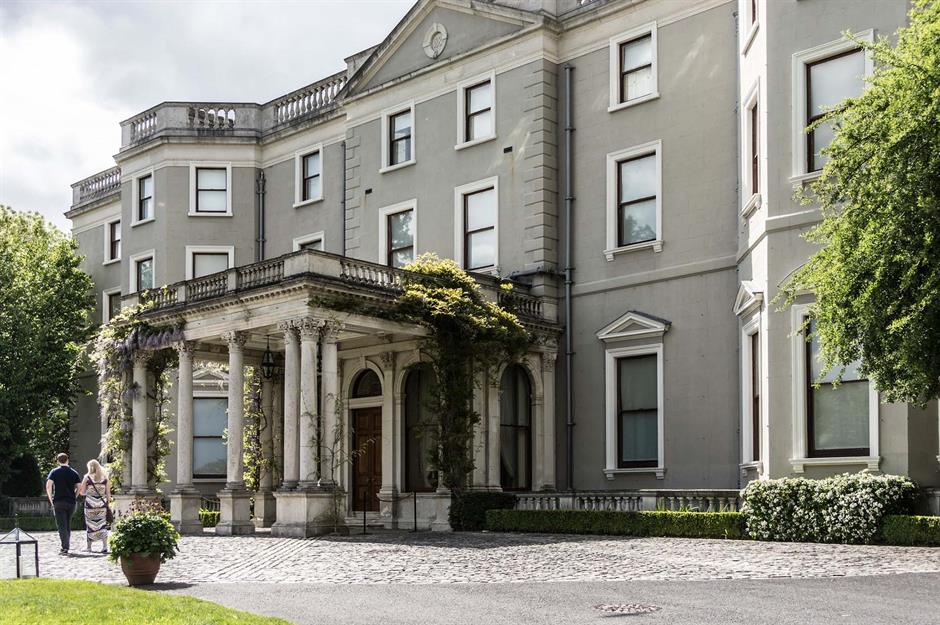
The family's fates were on the up. Sir Benjamin's son, Edward Guinness, 1st Earl of Iveagh, became the richest person in Ireland and lived an even more pampered existence than his father.
In 1873, the future earl bought Farmleigh in Phoenix Park to serve as his Dublin base. The 18th-century house was extensively refurbished and reflects the style of the Edwardian period, housing important artworks and furnishings, as well as the Benjamin Iveagh Library, containing rare books, bindings, and manuscripts.
After remaining in the family for generations, Farmleigh was sold in 1999 by Edward Guinness to the Irish government for €30 million, some €51 million ($55m/£40.6m) in today's money. It's now managed by the Office of Public Works.
Kenwood House
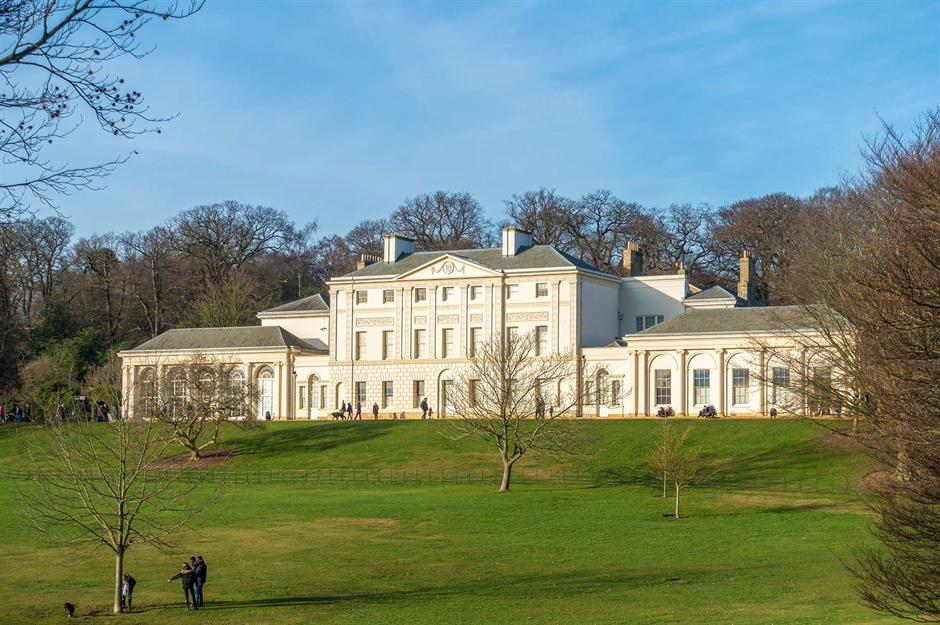
Renowned for his philanthropic generosity, Edward also bought Kenwood House in London's Hampstead in 1925 and bequeathed the stately home to the nation upon his death two years later.
As one of the world's grandest stately homes, the Neo-classical building was remodelled by Robert Adam in the late 1700s. Kenwood opened to the public in 1928.
The house boasts an enviable collection of paintings, which also came courtesy of Edward Guinness. Notable works on display in the North London mansion include Vermeer's The Guitar Player and Self-Portrait with Two Circles by Rembrandt.
Fairytale Luggala estate
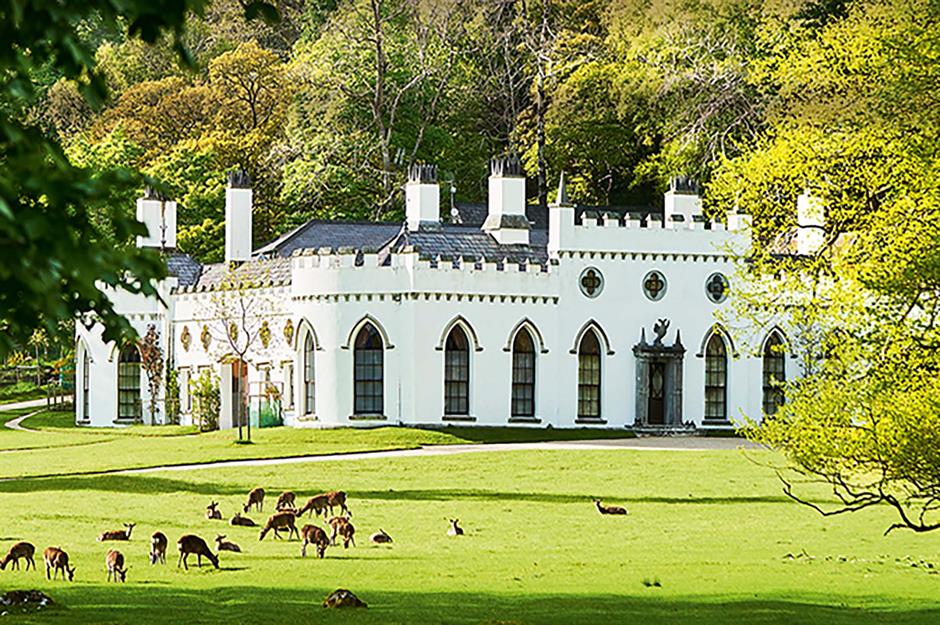
Continuing the family tradition of buying large houses, in 1937, Edward’s second son, Arthur Ernest Guinness, bought Luggala, a romantic County Wicklow hunting lodge that stands on the shores of the breathtaking Loch Te, also known as Guinness Lake. It was a gift for his daughter Oonagh to mark her engagement to Philip Kindersley, her first husband.
The house was inherited by Oonagh's son, the late art collector Garech Browne, who founded the record label Claddagh Records, based in Dublin's Temple Bar area.
The property was listed for €28 million (£23.7m/$30.4m) in 2017 and, following Browne's death in March 2018, the house sold in 2019 for significantly less than the ambitious asking price.
Elveden Hall
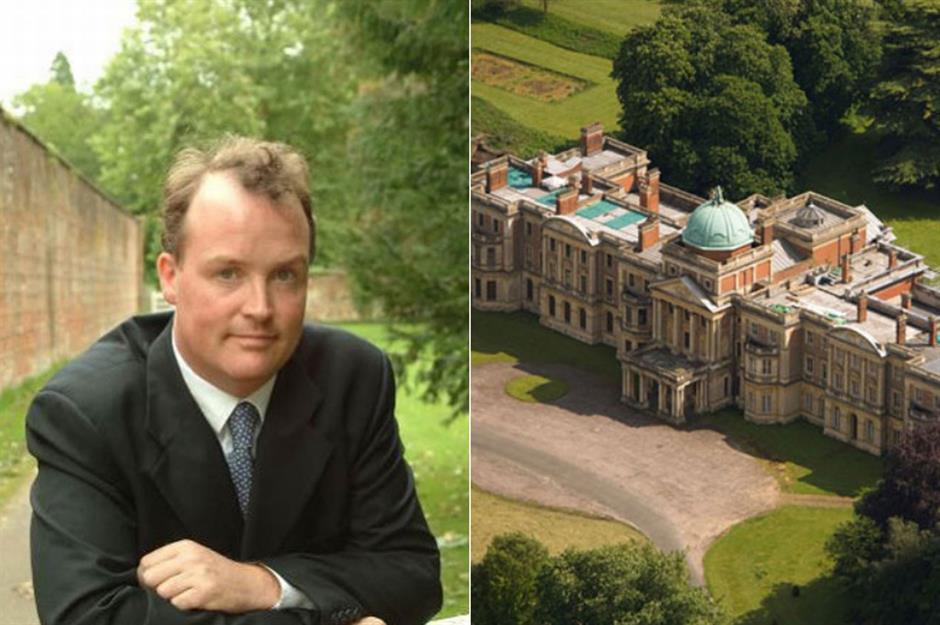
In 1863, Maharajah Duleep Singh, the last Maharajah of the Sikh Empire, purchased Elveden Estate, eventually leaving in 1886. In 1894, Edward Cecil Guinness, the 1st Earl of Iveagh, bought the Italian-style mansion.
While other scions of the vast Guinness family have relinquished their ancestral properties or succumbed to 'the curse', the current Earl of Iveagh, Edward Guinness, remains custodian of Elveden Hall, carrying on the family line.
The Rockefeller family
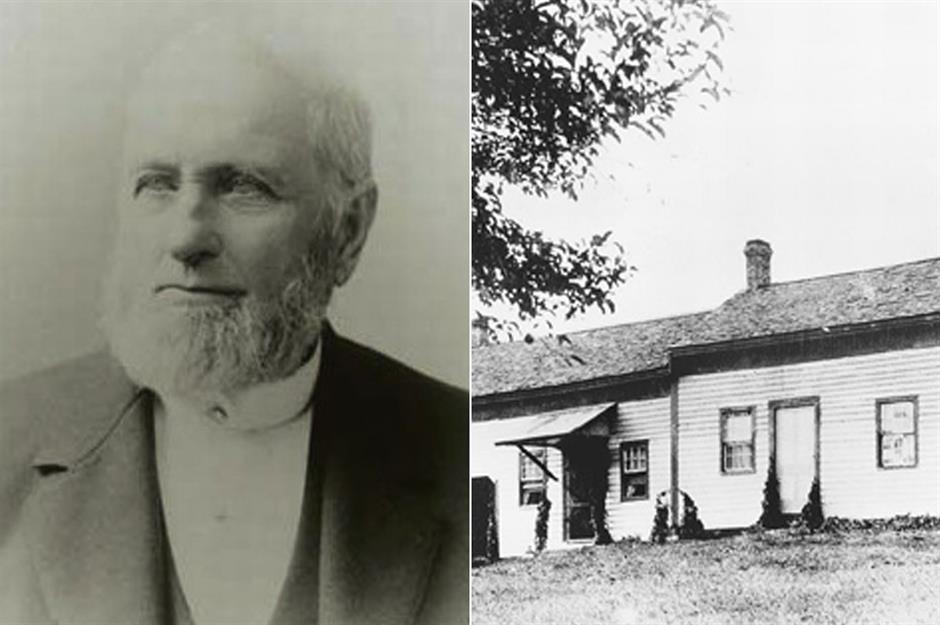
While the Rockefeller family is considered American royalty, the clan's origins are anything but regal. The head of the dynasty, William Rockefeller Sr, was a con artist implicated in several serious scandals during his lifetime who reportedly boasted: "I cheat my boys every chance I get. I want to make 'em sharp," according to British newspaper The Mirror.
The family lived in this modest farmhouse in the appropriately named Richford, New York which he bought around 1833.
From humble beginnings, Rockefeller's entrepreneurial sons John Davison Sr and William Jr went on to found Standard Oil in 1870. By the 1880s, the brothers were among the richest people in the US.
Regal Rockwood Hall
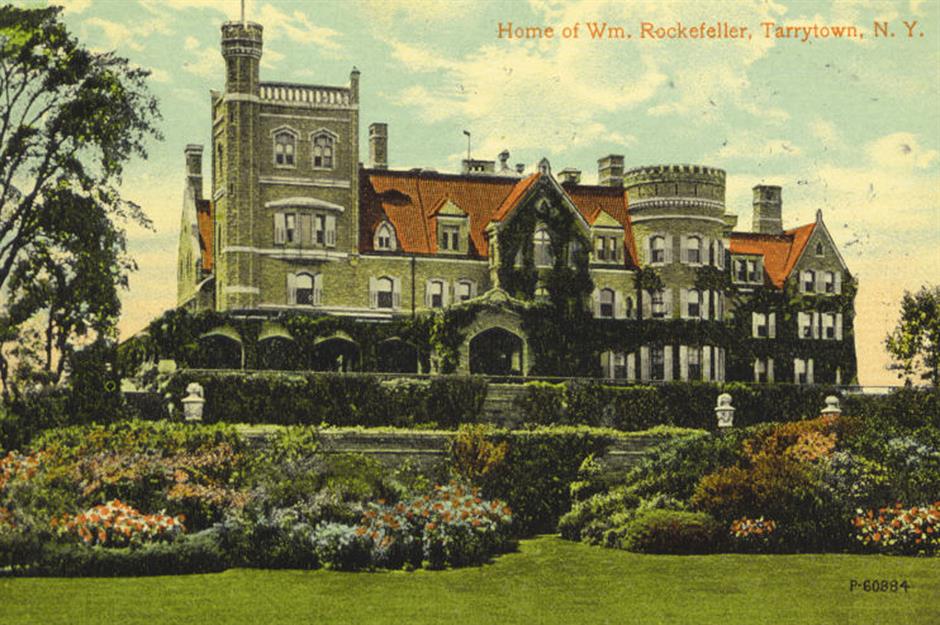
In 1886, William Jr splashed $150,000 on the splendid Rockwood Hall in Mount Pleasant, New York. That's around $5 million (£3.7m) in today's money. The younger Rockefeller sibling spent millions revamping the Neo-Gothic pile, transforming it into an extravagant 240-room palace.
William Jr died at the house in 1922, and the property subsequently served as a country club for a time before finally succumbing to the wrecking ball in 1941.
A mansion for the world's first billionaire
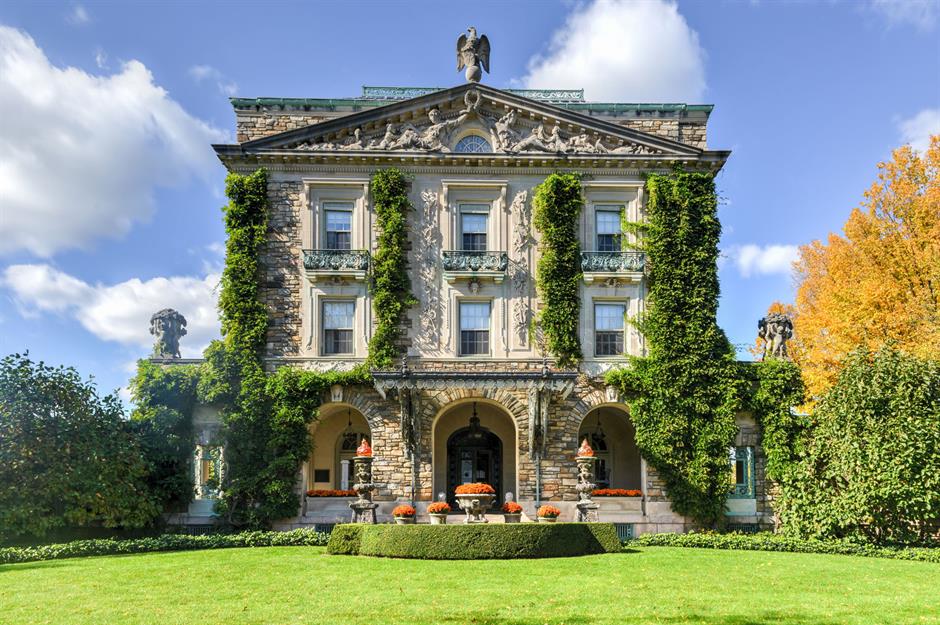
John Davison Rockefeller Sr, who would go on to become the world's first billionaire, was a frequent guest at his brother's country estate and bought land and property in nearby Pocantico Hills in 1893.
Kykuit, the tycoon's famous 40-room Neo-classical mansion, is set high above the Hudson with views of the river and Palisades. Completed in 1915, its name is apt as it's derived from the Dutch word for “look-out”. The estate passed from John D. Rockefeller to his son, John D. Rockefeller Jr and his grandson Nelson Rockefeller.
In 1979, Nelson, who was vice president under Gerland Ford and a four-time governor of New York, bequeathed the mansion to the National Trust for Historic Preservation, and it's now a museum.
New York’s most desirable apartment
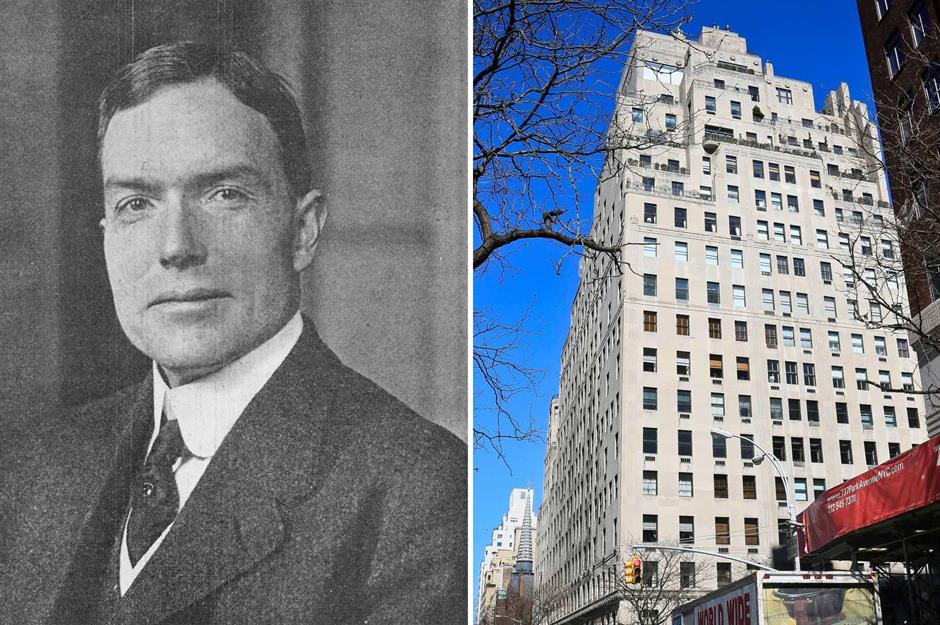
Like his billionaire father, philanthropist John Davison Rockefeller Jr acquired several wow-factor properties in his lifetime, including the incomparable 15B, 740 Park Avenue, considered to be one of New York City's most desirable apartments.
He bought the property in 1937 and filled it with valuable furnishings and art. The fabled 24-room apartment was sold to financier Saul Steinberg in 1971 and is now owned by private equity billionaire Stephen Schwarzman.
Other notable residents of the exclusive Upper East Side cooperative include David Koch and wedding dress designer Vera Wang.
Selling off the family treasures
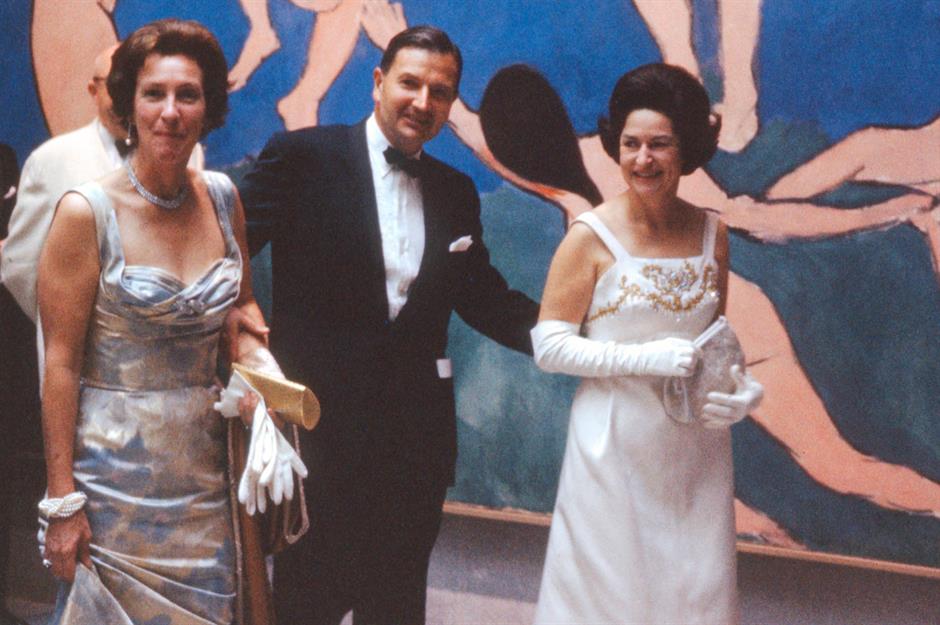
Banker David Rockefeller died in 2017 at the ripe old age of 101. He was the son of John Davison Rockefeller Jr and was one of the five famous Rockefeller brothers. A major philanthropist, David once donated $150 million (£111m) to New York's Museum of Modern Art (MOMA), which his mother co-founded, and left behind a slew of premium real estate. He's pictured here at the MOMA in 1964 with his wife Peggy (left) and First Lady 'Lady Bird' Johnson.
David's heirs sold off several family properties, including the 75-acre (30ha), 11-bedroom Hudson Pines in Pocantico Hills, which sold for $33 million (£25m) in March 2018.
A tradition of philanthropy
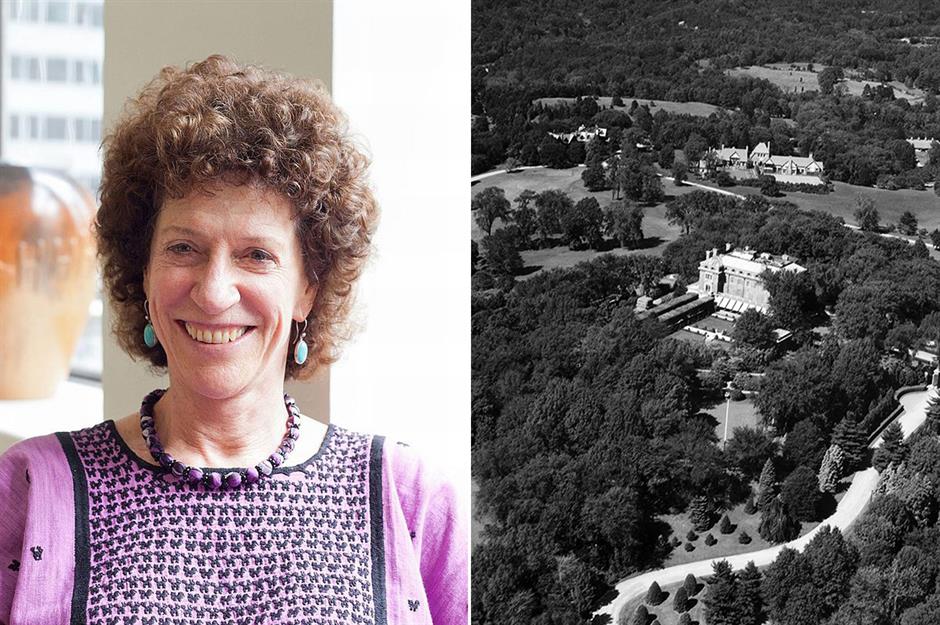
Kykuit (pictured, right) and Hudson Pines no longer belong to the family, but several prominent Rockefellers still live in grand houses on the vast Pocantico Hills estate, including the fourth child of David Rockefeller, Margaret Dulany "Peggy" Rockefeller, who carries on her father's work.
The late philanthropist said in his 2002 memoir, aptly named Memoirs, that his forefathers believed "the art of giving" money was as important as making it.
The Astor family
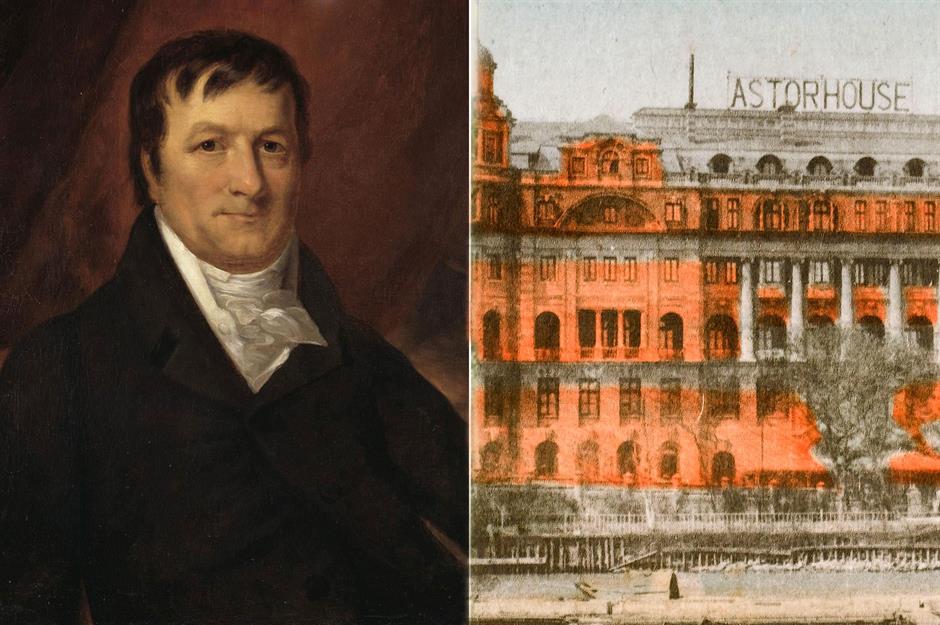
Rising to prominence during the 19th century, the Astor family has been hugely influential in business, politics, and society on both sides of the Atlantic. Born in Walldorf, Germany in 1763, patriarch John Jacob Astor emigrated to America at the age of 21, where he made a fortune in the fur trade and acquired the long-demolished Hellgate mansion in New York.
The 13-acre (5.2ha) estate was a far less flamboyant showpiece than those owned by later Astor generations, but it was known for its impressive literary and musical associations. Washington Irving penned his novel Astoria here. The dynasty's founding father also had a mansion on New York's Broadway which later became Astor House, the city's first luxury hotel.
Romantic Rokeby
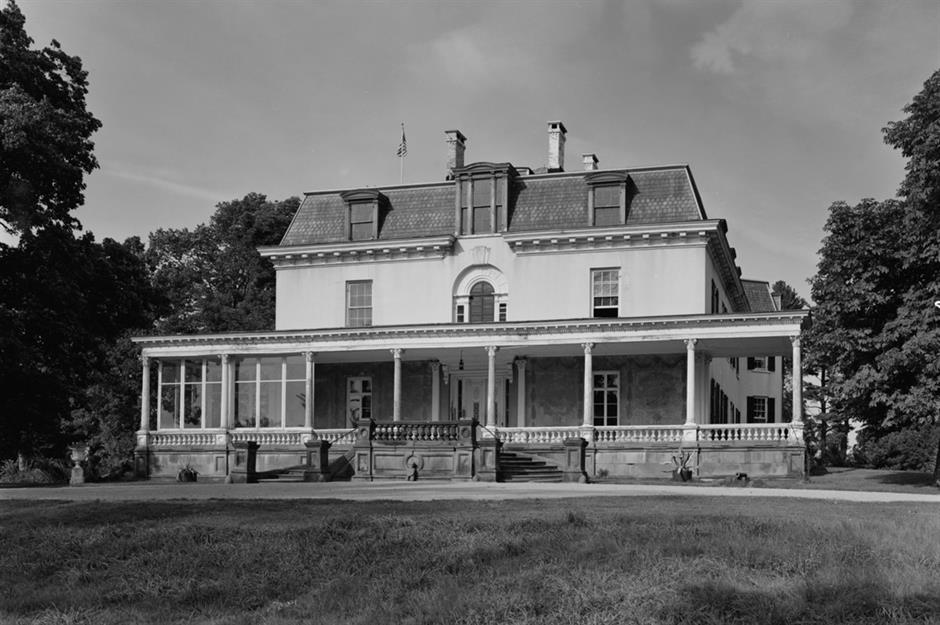
In 1836, John Jacob Astor's son and heir, William Backhouse Astor Sr, purchased Rokeby mansion in Barrytown, New York from his father-in-law, John Armstrong Jr, after marrying his daughter Margaret.
Initially named 'La Bergerie' (the sheepfold) for the Merino sheep that grazed here, Armstrong changed the name of the house to Rokeby at Margaret's request, in honour of the Sir Walter Scott poem of the same name.
The 43-room mansion passed to William's granddaughter, Margaret Astor Ward, and her husband, John Winthrop Chandler, who both died tragically young, leaving behind 11 children, the so-called 'Astor Orphans'. The children were brought up at Rokeby.
One became the artist Robert Winthrop Chanler, and several of his painted murals now hang in the home's halls. Steeped in faded grandeur, the mansion is still owned by a branch of the family.
High-society Beechwood
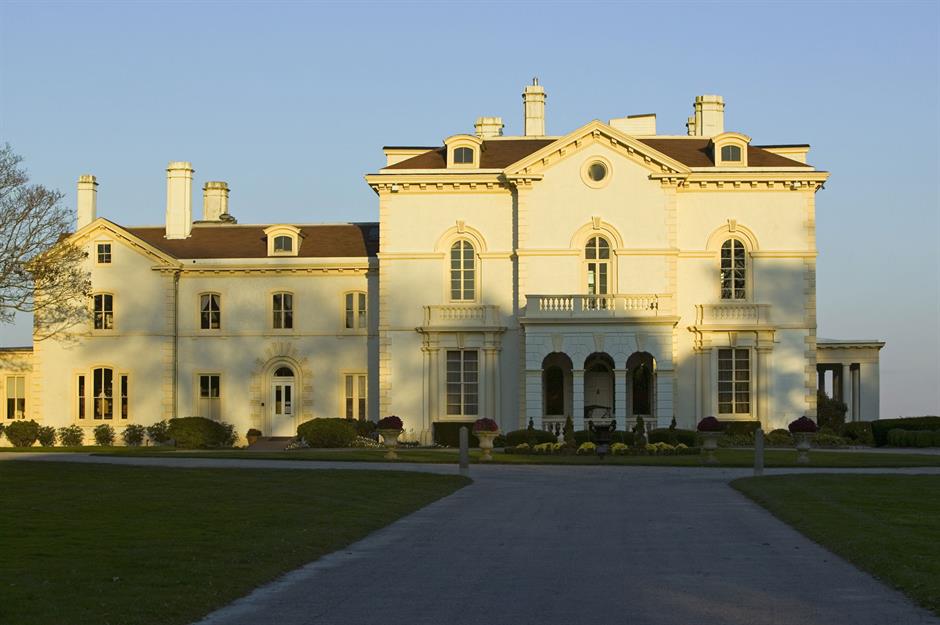
In 1881, William Backhouse Astor's namesake son acquired the Italianate Beechwood mansion in Newport, Rhode Island for $190,000 (£153k). The 39-room oceanfront property quickly became a magnet for America's high society.
Beechwood was inherited by William Backhouse Astor's son, John Jacob Astor IV, who married his wife, Madeleine, in the ballroom. Tragically, John Jacob died aboard the ill-fated Titanic in 1912. After Madeleine Astor's death, Beechwood was sold to a theatre company.
In 2010, the mansion was purchased for $10.5 million (£7.7m) by billionaire Larry Ellison, who has spent 10 times that amount, according to business website GoLocalProv, to restore the house and other buildings. Luckily, he has deep pockets.
Classy Cliveden House
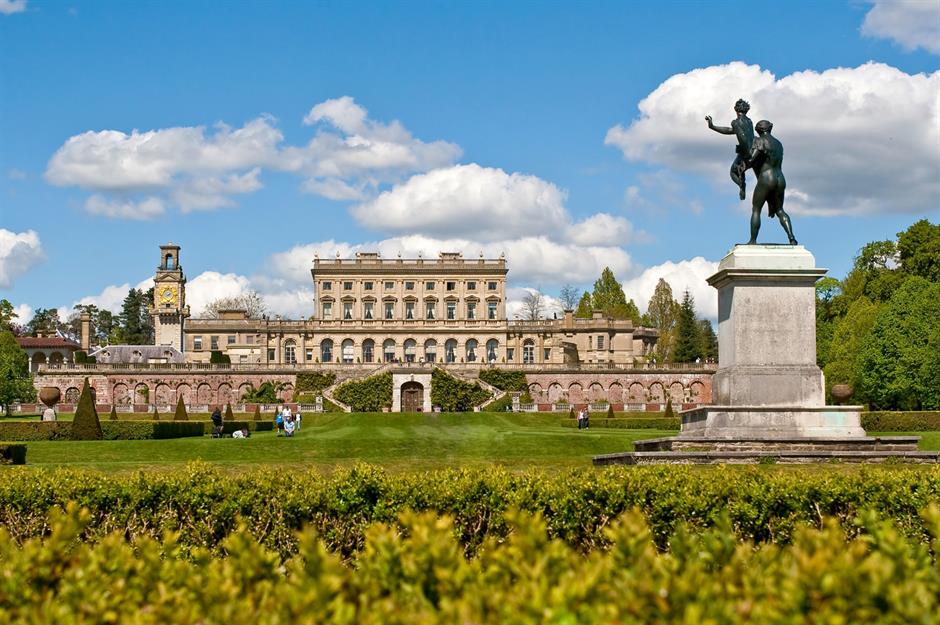
William Backhouse Astor's grandson, William Waldorf Astor, moved to the UK in 1891 and snapped up the sublime Cliveden House in Buckinghamshire.
He also managed to bag an aristocratic title and gifted the 19th-century Italianate mansion to his son, Waldorf Astor, 2nd Viscount, in 1906. Viscount Astor and his wife Nancy, the UK's first sitting female MP, hosted legendary parties at the mansion for high-profile guests, including Charlie Chaplin, Winston Churchill, and Mahatma Gandhi.
Hever Castle and royal connections
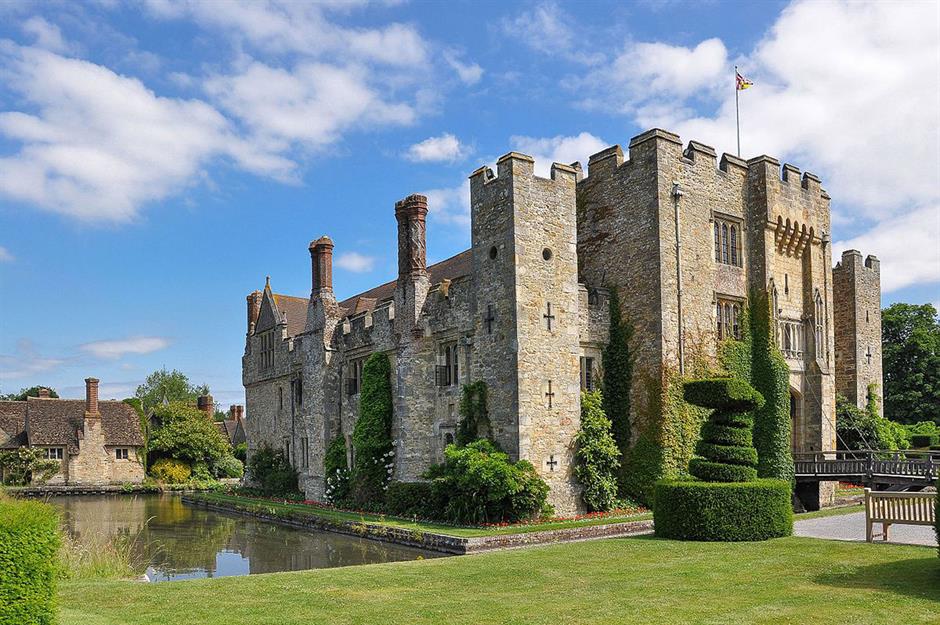
The last Astor moved out of Cliveden House in 1968 after the house became the focus of the notorious Profumo Affair, which brought down the British government in the 1960s. The estate was handed over to the National Trust.
But the Astors have other royal links. In 1903, William Waldorf Astor purchased the 13th-century Hever Castle in Kent, which had been the childhood home of Anne Boleyn. He moved to England in 1891, claiming America was "no longer a fit place for a gentleman to live".
The uber-wealthy philanthropist moved into the castle in 1906 and embarked on an extensive renovation project, which included restoring a bedroom once used by King Henry VIII. The castle remained in the family until 1983 and is now a popular tourist attraction.
Grand Ginge Manor
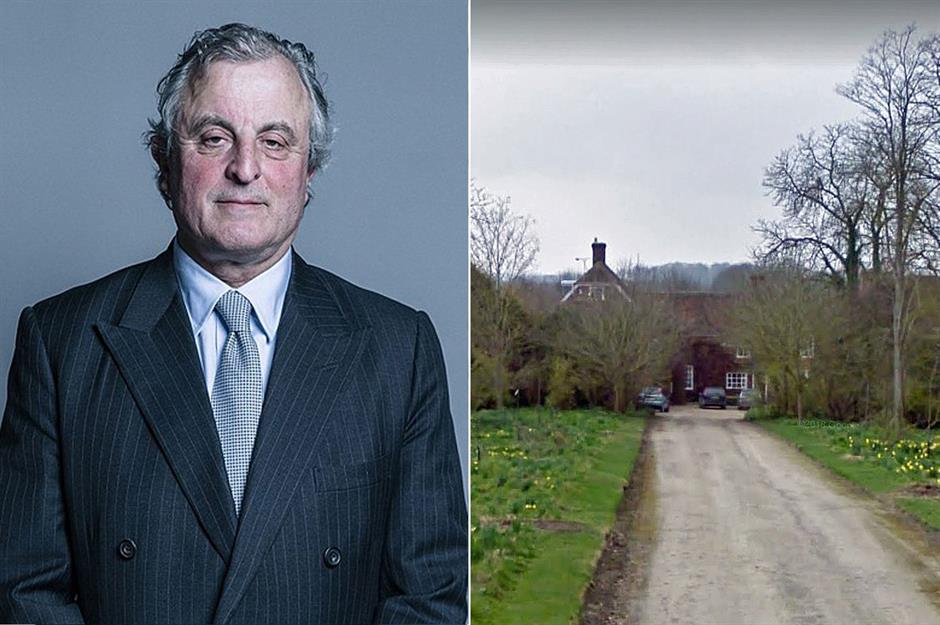
Though some Astors have fallen on hard times, the aristocratic branch is doing just fine.
According to American magazine Vanity Fair, the current Viscount Astor, Conservative peer William Astor, resides at Ginge Manor, a 17th-century redbrick mansion in Oxfordshire, with his wife Annabel Astor.
Annabel is the owner of home furnishings brand OKA and the mother of Samantha Cameron, wife of former UK Prime Minister David Cameron.
The Rothschild family
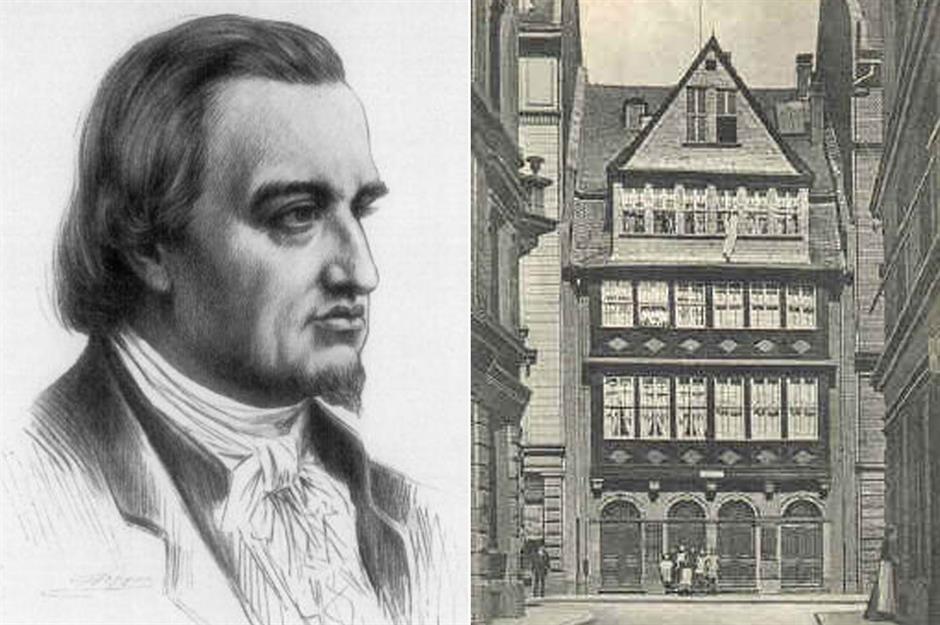
The patriarch of the illustrious Rothschild banking dynasty and the founding father of international finance, Mayer Amschel Rothschild was born in Frankfurt's Jewish ghetto in 1744 and rose to become Europe's leading banker.
During the 19th century, the Rothschild family held one of the largest private fortunes in the world, which was subsequently divided among many descendants. Today, the family is involved in a diverse range of fields, including financial services, real estate, mining, energy, agriculture, winemaking, and nonprofits.
Château de Ferrières
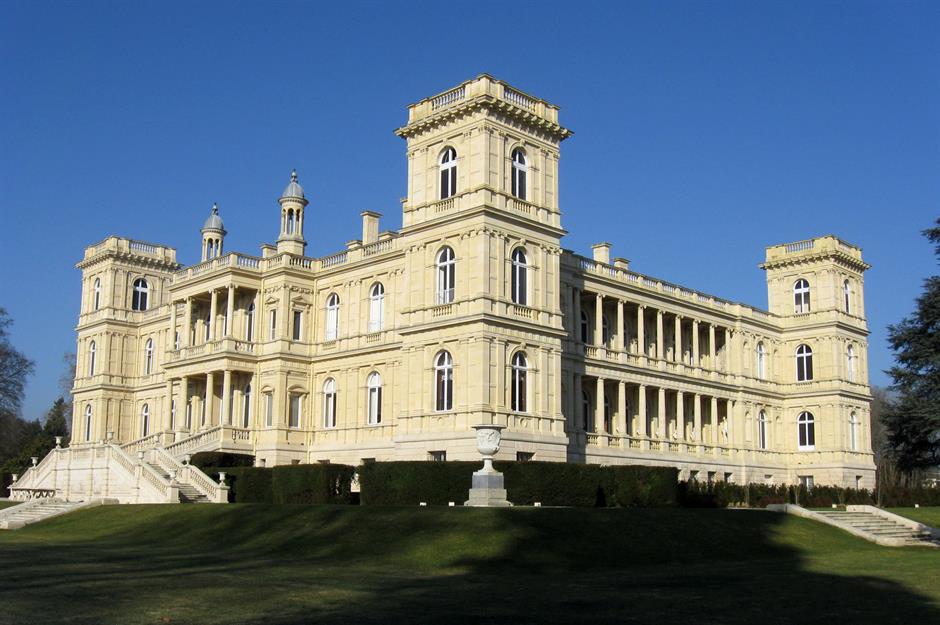
Mayer Amschel Rothschild sent his sons abroad to expand the family banking business. Jacob was packed off to France, where he picked up a title and changed his name, becoming Baron James de Rothschild.
In 1855, the baron commissioned the Château de Ferrières, now considered the largest and most luxurious 19th-century French château of its kind. Near Paris, Château de Ferrières exemplifies the 'Goût Rothschild': the family's elaborate signature style that was copied by other leading families, including the Vanderbilts, Rockefellers, and Astors.
Guy de Rothschild donated it to the University of Paris in 1975. It is now an event location and haute gastronomy school.
Waddesdon Manor
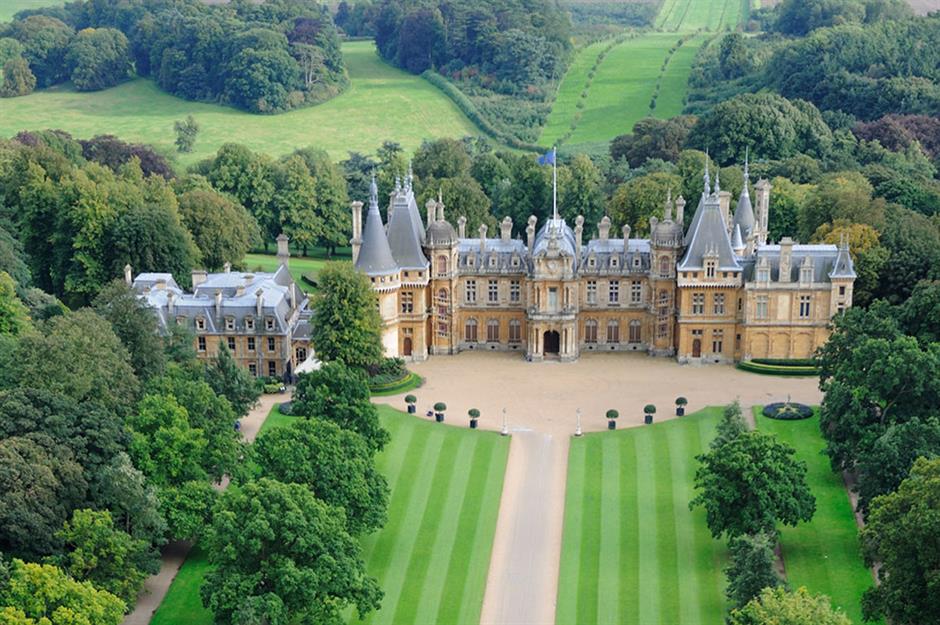
Waddesdon Manor in Buckinghamshire, England was built between 1874 and 1889 as a weekend retreat for Baron Ferdinand de Rothschild, great-grandson of Mayer Amschel Rothschild and a descendant of the Austrian branch of the dynasty.
He was widowed after just a year of marriage when his wife Evelina died in childbirth in 1866. He went on to have a successful political career in the UK.
The Renaissance-style country estate hosted Queen Victoria in 1890 and houses an exceptional art collection. It was bequeathed to the National Trust in 1957 by James de Rothschild and is now open to the public.
Hôtel de Pontalba
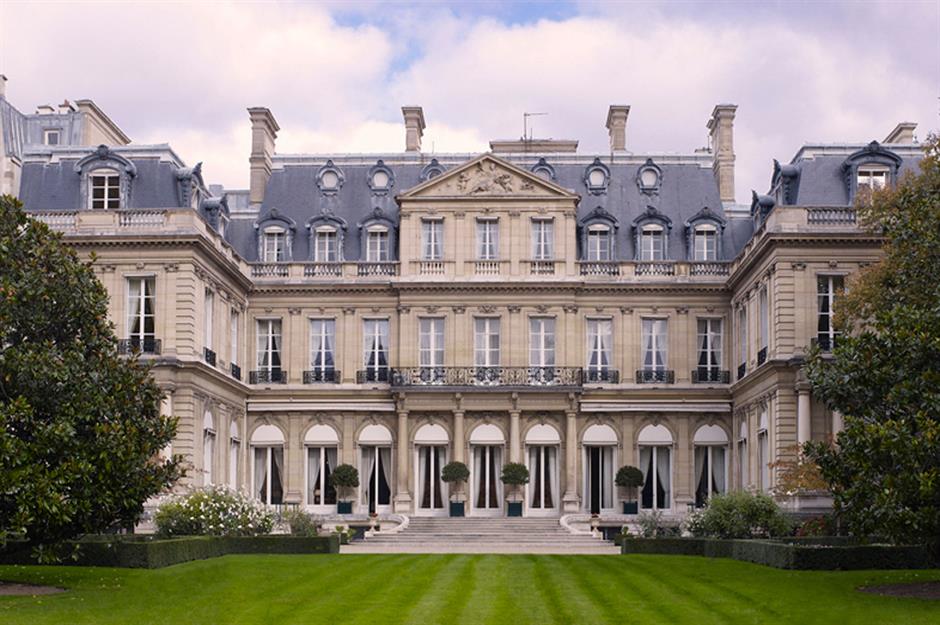
In 1876, Baron Edmond James de Rothschild, son of Baron James de Rothschild, bought Paris's most sought-after townhouse, the Hôtel de Pontalba on rue du Faubourg Saint-Honoré. Baron commissioned Félix Langlais to carry out extensive interior alterations on the 60,000-square-foot (5,574sqm) property, decorating it in the Goût Rothschild style.
The detached house passed to Maurice de Rothschild but was seized by the Nazis during the Second World War.
Rented by the Allies after the war, it was sold to the US government in 1948. Today, Hôtel de Pontalba is the official residence of the US ambassador to France.
A family gem on the French Riviera

Baroness Béatrice Ephrussi de Rothschild, granddaughter of Baron James de Rothschild, constructed Villa Ephrussi de Rothschild, a beautiful rose-hued property in Saint-Jean-Cap-Ferrat on the French Riviera. Built between 1905 and 1912, it is said to have the most beautiful views of the Côte d'Azur.
The villa was crammed with rare antiques and art, collected during the baroness's travels around the world, and even had its very own zoo.
Upon the death of the baroness in 1934, the property was bequeathed to the Académie des Beaux-Arts and turned into a museum. Today, it is open to the public.
Passing on the properties
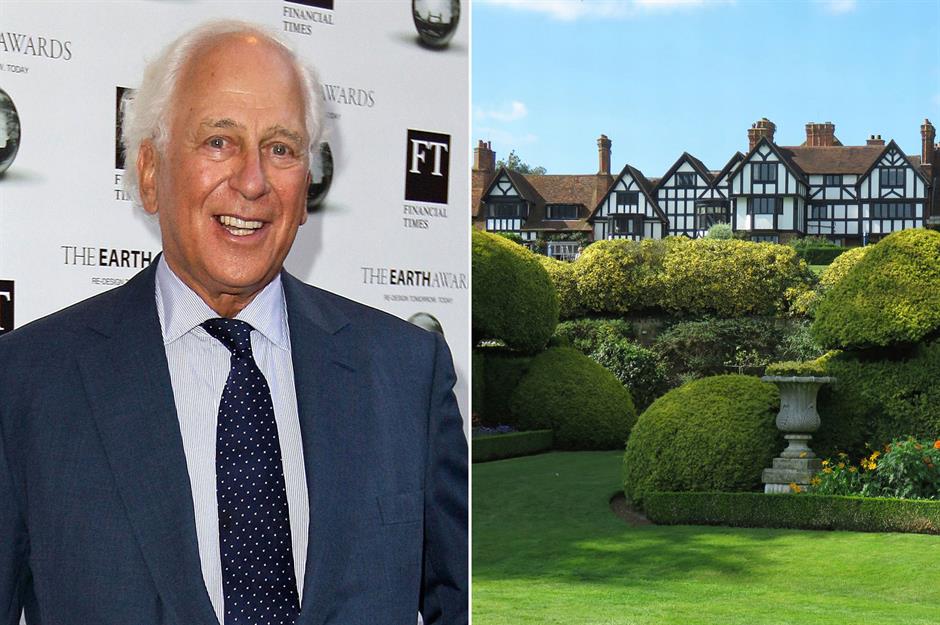
After the property was acquired by his great-great-uncle, Baron Mayer Amschel de Rothschild in 1873, financier Sir Evelyn de Rothschild continued to reside at the family's Tudor Revival Ascott House in Buckinghamshire until he died in November 2022.
British newspaper The Daily Mail reported that the tycoon left control of his $227 million (£167m) fortune to his widow and third wife, Lynn Forester de Rothschild, who will continue to live at the family estate.
He is also survived by his three adult children from his second marriage. The dynasty lives on.
The Bush family
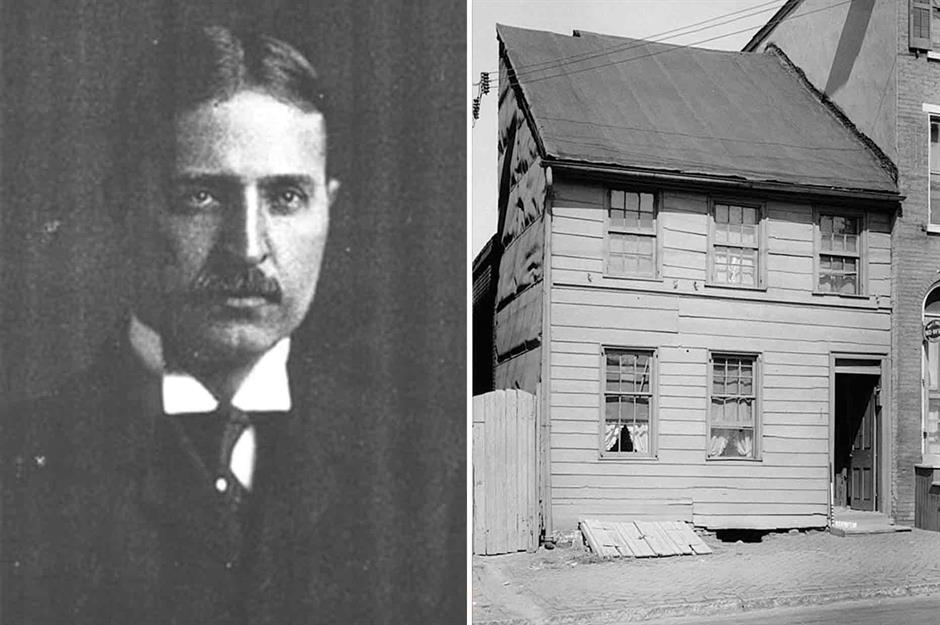
Born in 1863 and starting out in this modest house in Delaware, New Jersey, the patriarch of the all-American political Bush dynasty, Samuel Prescott Bush, would see his family rise to lofty heights.
The businessman and industrialist’s son, Prescott Sheldon Bush, became a US senator. His grandson George H W Bush and great-grandson George W Bush became the 41st and 43rd Presidents of the United States.
The clan dabbled in everything from oil and fashion to banking and steel and is said to be worth $400 million (£295m).
George W Bush's childhood bedroom
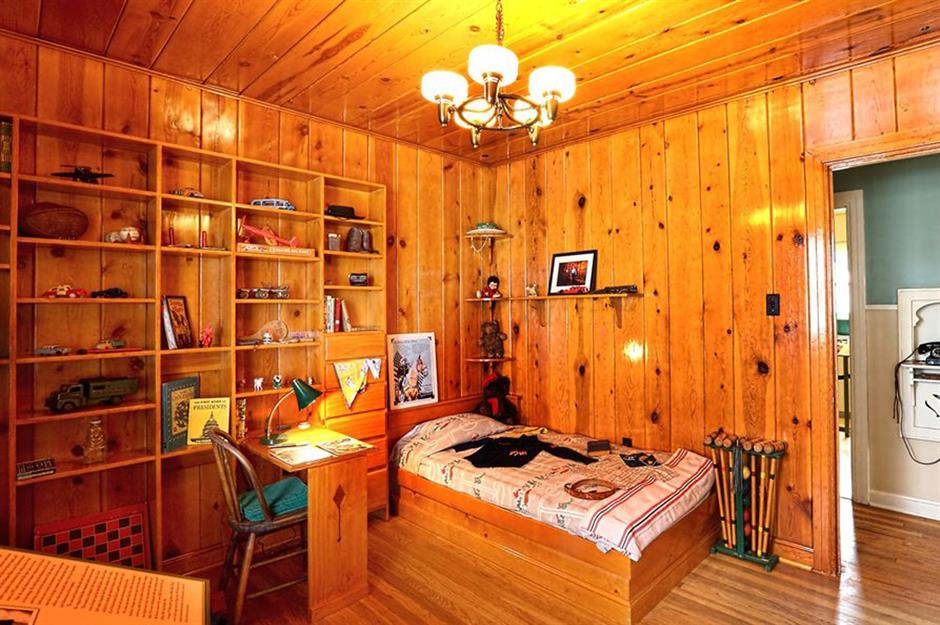
Years before either George became president, they lived at a modest one-frame suburban house in Midland, Texas. Bush Senior relocated his wife Barbara and family to the town to establish himself in the oil business in 1951, when George W Bush was just five. The childhood home of the former president is now open to the public.
You can even see the pine-clad bedroom, complete with hockey sticks and a school desk, where the future 43rd president swotted up on his history of the Constitution.
The Bush family lived in the house for four years before upgrading to a fancier home as Bush Senior’s business flourished.
Bush Senior after the White House
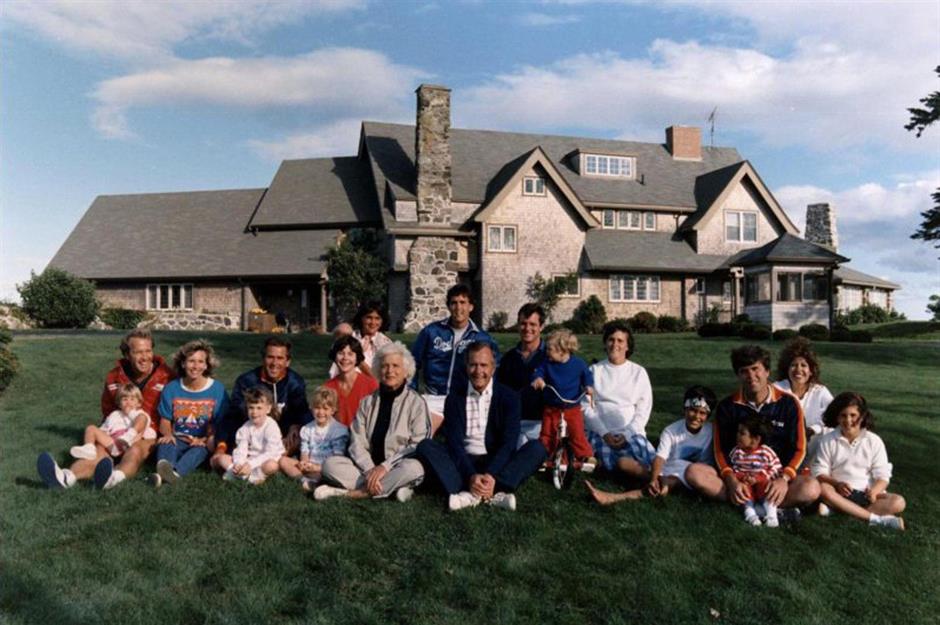
After he lost to President Clinton in 1992, one-term president Bush Senior decamped to the family vacation compound of Walker’s Point, in Kennebunkport, Maine while his retirement home in Houston was being completed.
Nicknamed the ‘Summer White House’ during his time as president from 1989 to 1993, the New England shingle-style main house has been in the Bush family for more than 100 years.
The laid-back holiday home
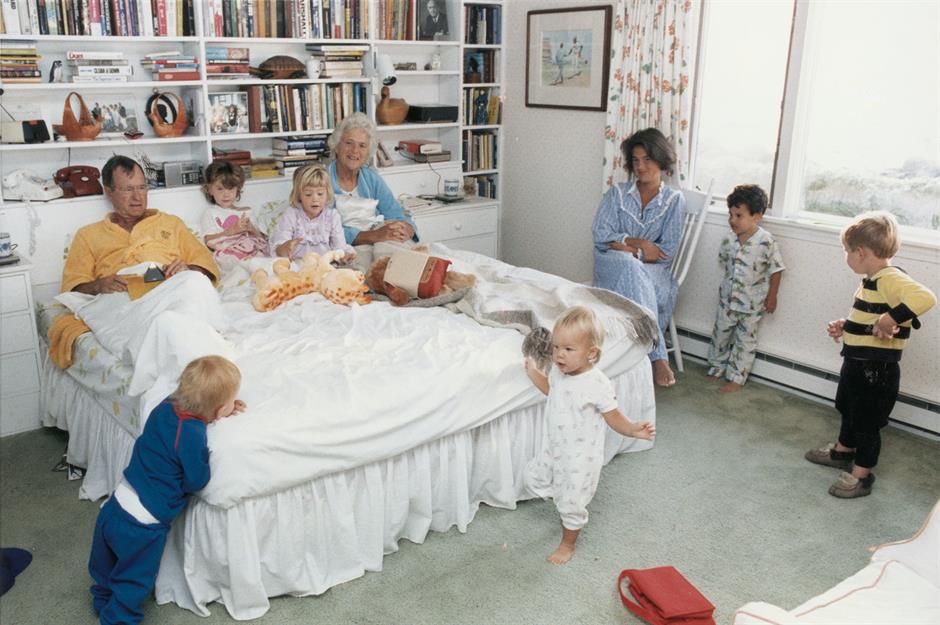
While Bush Senior hosted many world leaders here during his time in power, including Vladimir Putin and Margaret Thatcher, the nine-bedroom home had a laid-back vibe. Even the master bedroom is refreshingly ordinary, with built-in shelving and simple bed linen. It's seen here with the former president, his wife Barbara, daughter-in-law and grandchildren in 1987.
Barbara once described the home’s décor as “hodgepodge”. We like it!
George W Bush's little house on the prairie
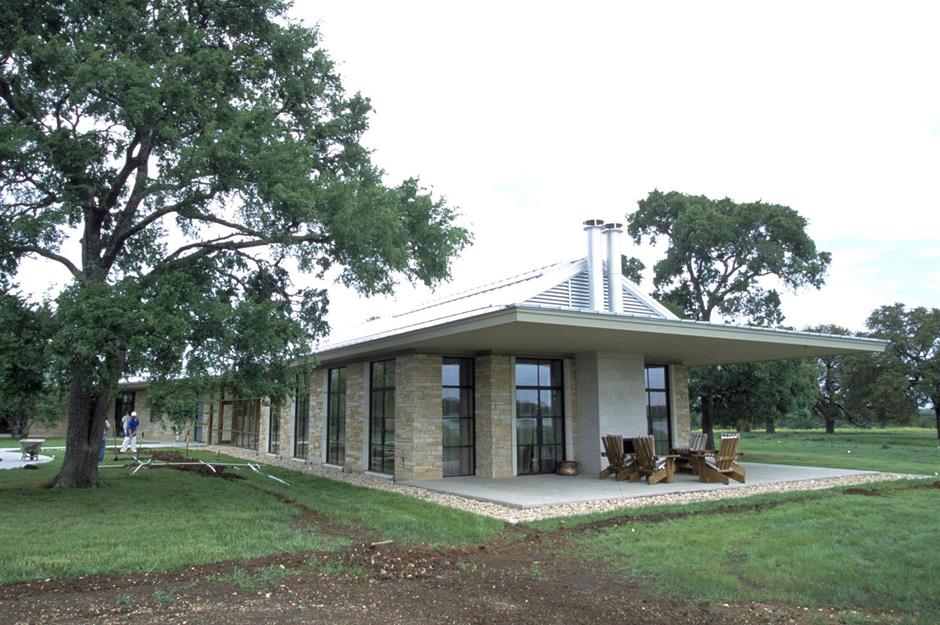
George W Bush’s two-term presidency, which was overshadowed by the 9/11 attacks and the Iraq War, ended on 20 January 2009. After leaving the White House, the former leader and his wife Laura moved to their cherished weekend and summer house, Prairie Chapel Ranch in Crawford, Texas, while their current home in Dallas was being built.
Dubbed the ‘Western White House’ while Bush was in office, the eco-friendly single-level ranch house of their dreams features three bedrooms and plenty of open-plan entertaining space, along with swathes of windows and doors to create a sense of indoor-outdoor living.
The Western White House
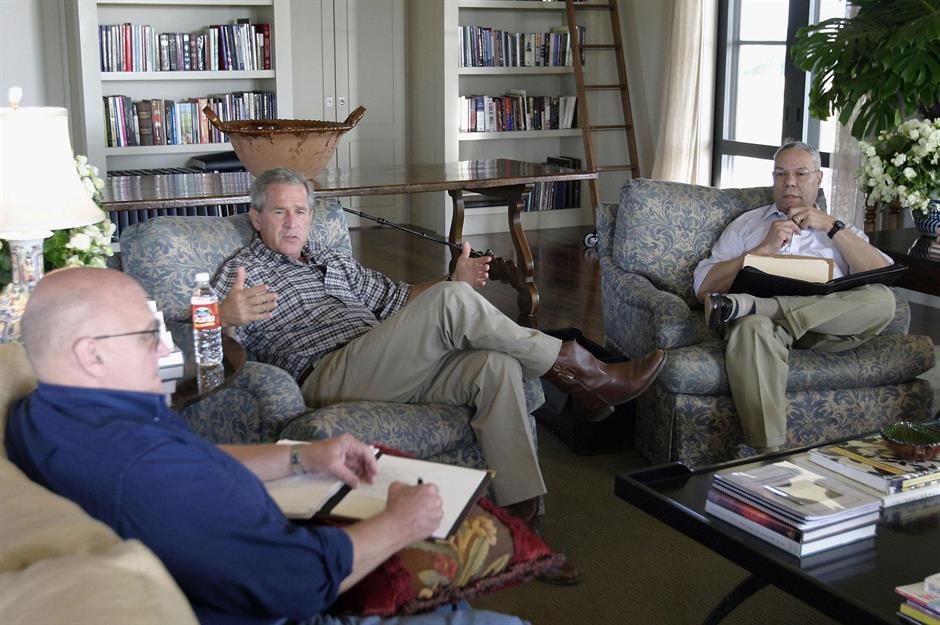
The ‘Western White House’ hosted a succession of foreign dignitaries, including former UK prime minister Tony Blair and Spain’s former King Juan Carlos and Queen Sofia, as well as members of his own administration.
George is seen here with Colin Powell, who became the first African-American Secretary of State in US history. The former leader and his wife still make regular trips to their 'little house on the prairie', where Bush likes to unwind with a fishing rod or a paintbrush according to Architectural Digest.
The Hancock/Rinehart family
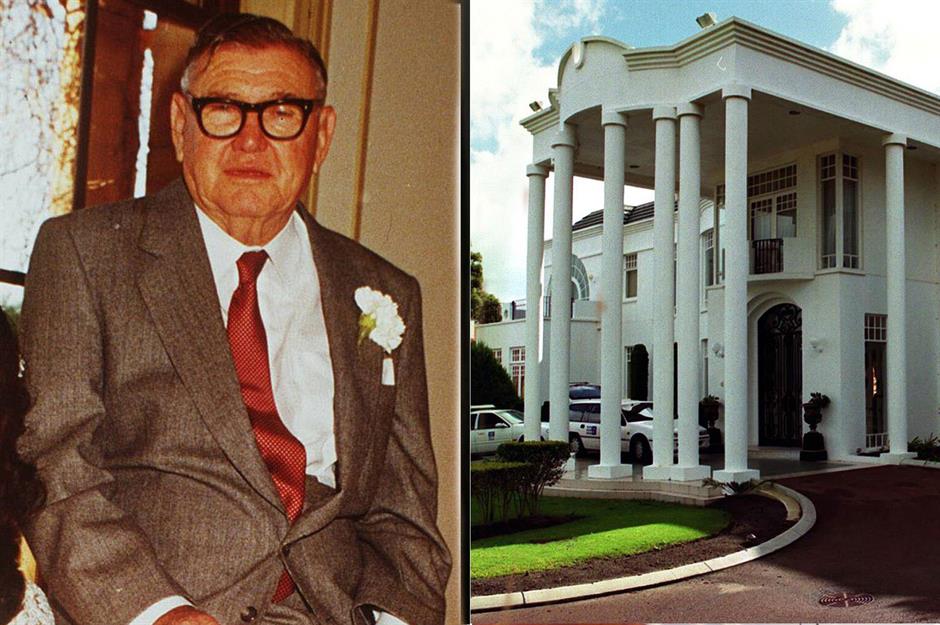
Australia’s richest family can thank clan patriarch Langley 'Lang' Hancock for its vast wealth.
The mining magnate, who died in 1992, began prospecting while managing his family’s sheep station in the Hamersley Range, Western Australia. In 1952, when he was forced to fly his private plane low in bad weather, he discovered some of the largest iron ore reserves in the world.
As well as making him one of the nation’s richest citizens, Hancock's mining empire helped finance his campaign to form a right-wing political party and fight for Western Australian independence.
Gone with the Wind mansion
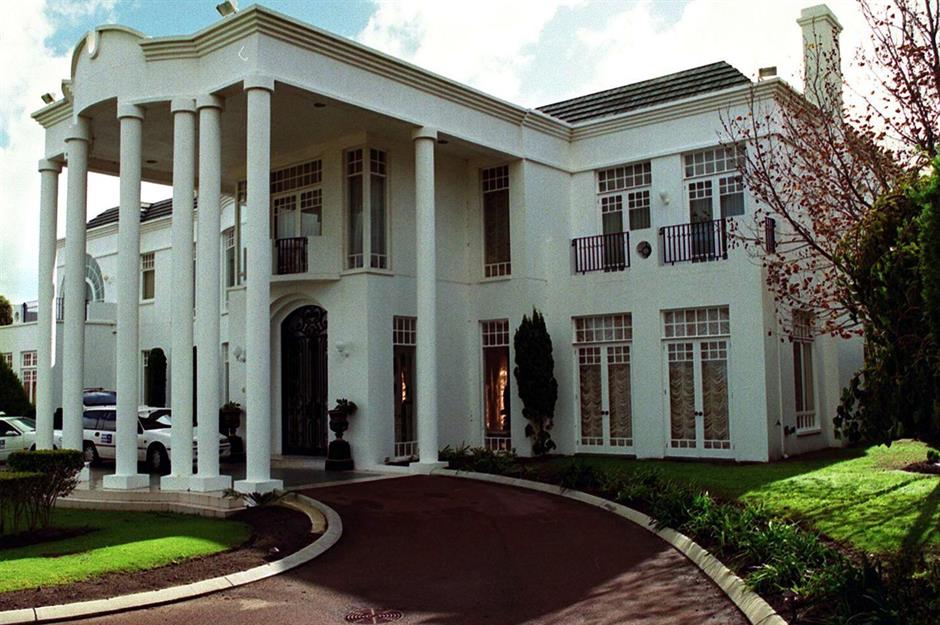
Hancock’s only child Gina Rinehart is Australia’s richest citizen, worth $30.8 billion (£22.7bn) according to Forbes. Father and daughter fell out after Rinehart's mother Hope died in 1983, and Langley married his much younger housekeeper Rose Lacson (now Porteous) in 1985.
The industrialist set about building a lavish Georgian mansion, Prix D’Amour, for his new wife in Perth. It was modelled on the Tara Plantation from the classic movie Gone with the Wind.
Death and the housemaid
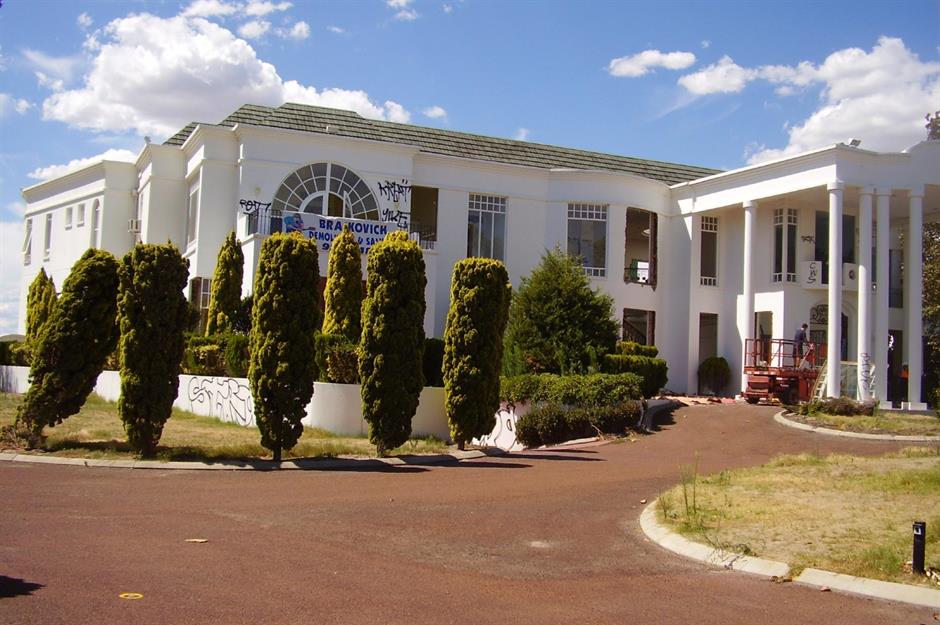
Despite their fallout, Gina was devastated when her father died in 1992 and allegedly hired detectives to try to prove that her father's second wife was to blame for his death. Lang's widow, who was later declared innocent of any crime, married one of her husband’s closest friends, the real estate tycoon William Porteous, just 151 days after Hancock’s death.
As for the lavish Prix D’Amour mansion, it was demolished in 2006.
The land was subdivided into 10 plots and sold off. Rose and her new husband had planned to build a new, smaller house on the site. “I told her I would call it Mini-Amour,” Mr Porteous told reporters.
Rose Porteous sells Mini-Amour
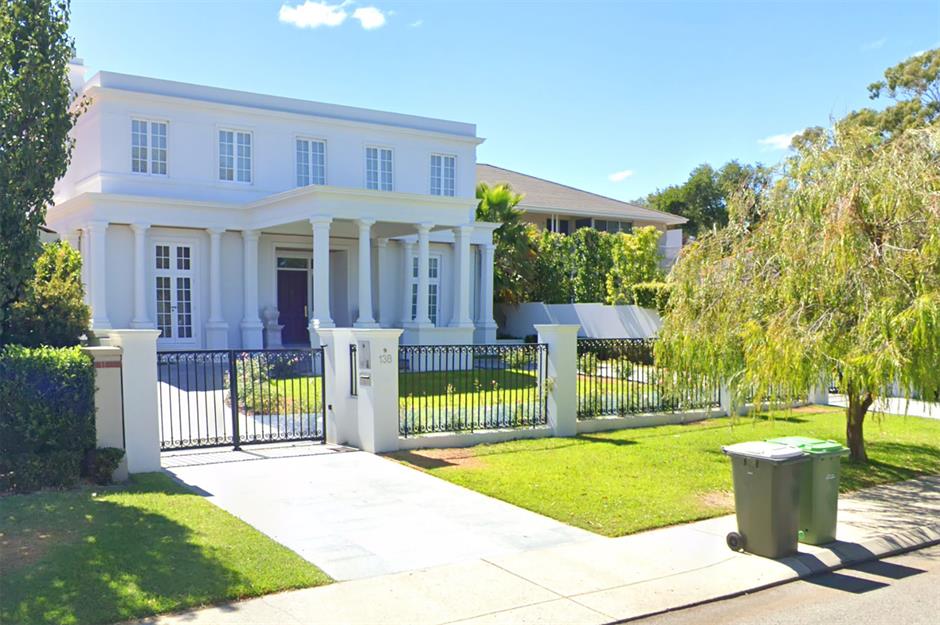
However, they ended up moving to this imposing mansion in the swanky suburb of Nedlands. The property was remarkably similar to Prix D’Amour, yet the couple listed it in 2022 for AUS$9 million ($6m/£4.4m).
The house has all the hallmarks of a miniature version of the original Gone With the Wind-inspired property in Perth, including a sweeping stairway in the entrance hallway.
Rose Porteous found herself amid a media storm when she was involved in a protracted legal battle with Hancock’s daughter, not just over the circumstances of Gina's father’s death, but also the distribution of his estate.
Bitter family feuds
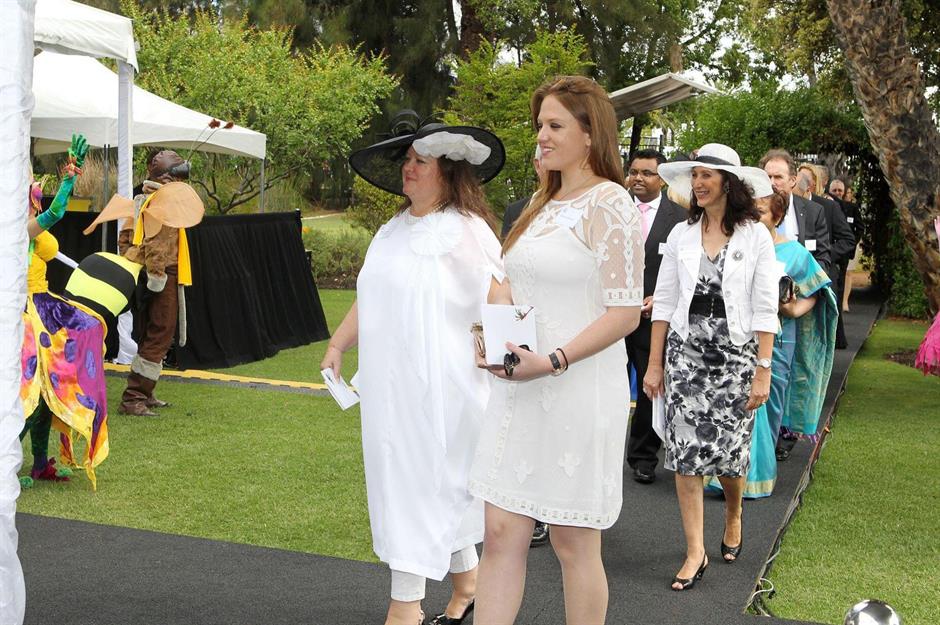
The family feuds do not end there. Gina Rinehart was sued by two of her four children, John Hancock and Bianca Rinehart, who alleged that she had committed “calculated and deliberate fraud”, according to ABC News. They claim mining assets bequeathed by Lang Hancock belong to them.
Her children also claim she has engaged in transactions to “devalue and destroy” the family trust at the expense of her children. Meanwhile, the youngest daughter Ginia has sided with her mother and has reportedly been tapped to take over the vast minerals empire. It reads like a plot from Succession...
Australian soap opera
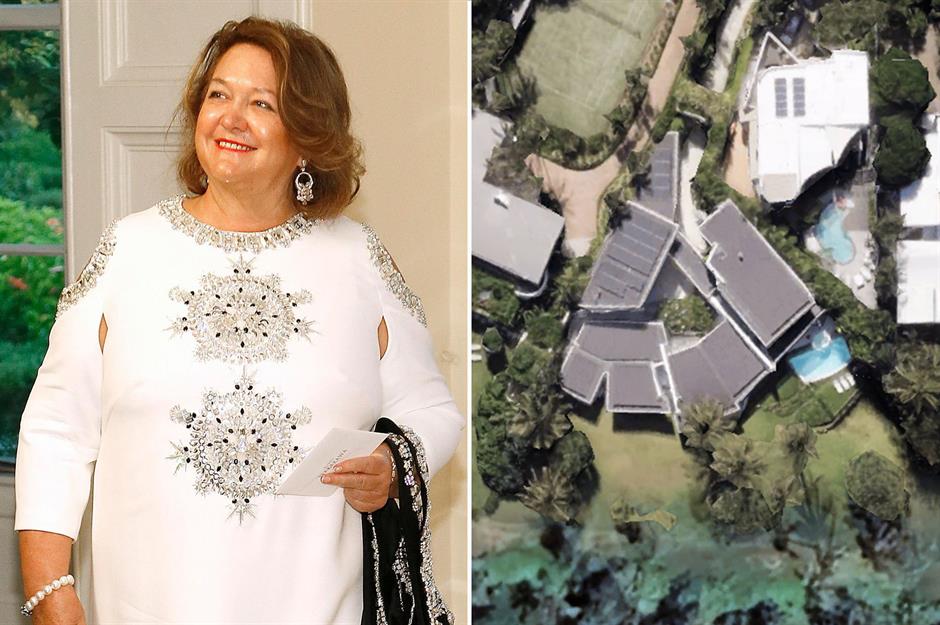
While the so-called ‘Iron Lady’ has built her wealth from inheritance and mining, Gina Rinehart also owns Australia’s second-largest cattle empire.
Rinehart boasts a vast portfolio of properties and was heavily linked to the sale of this AU$34 million ($22.9m/£16.8m) oceanfront mansion on Queensland's Sunshine Coast in 2021. Yet for all her wealth, her family affairs are the stuff of an Australian soap opera.
Loved this? Now explore more of the world's most luxurious homes
Comments
Be the first to comment
Do you want to comment on this article? You need to be signed in for this feature